1lumen selects and reviews products personally. We may earn affiliate commissions through our links, which help support our testing.
Manker MC13 II review
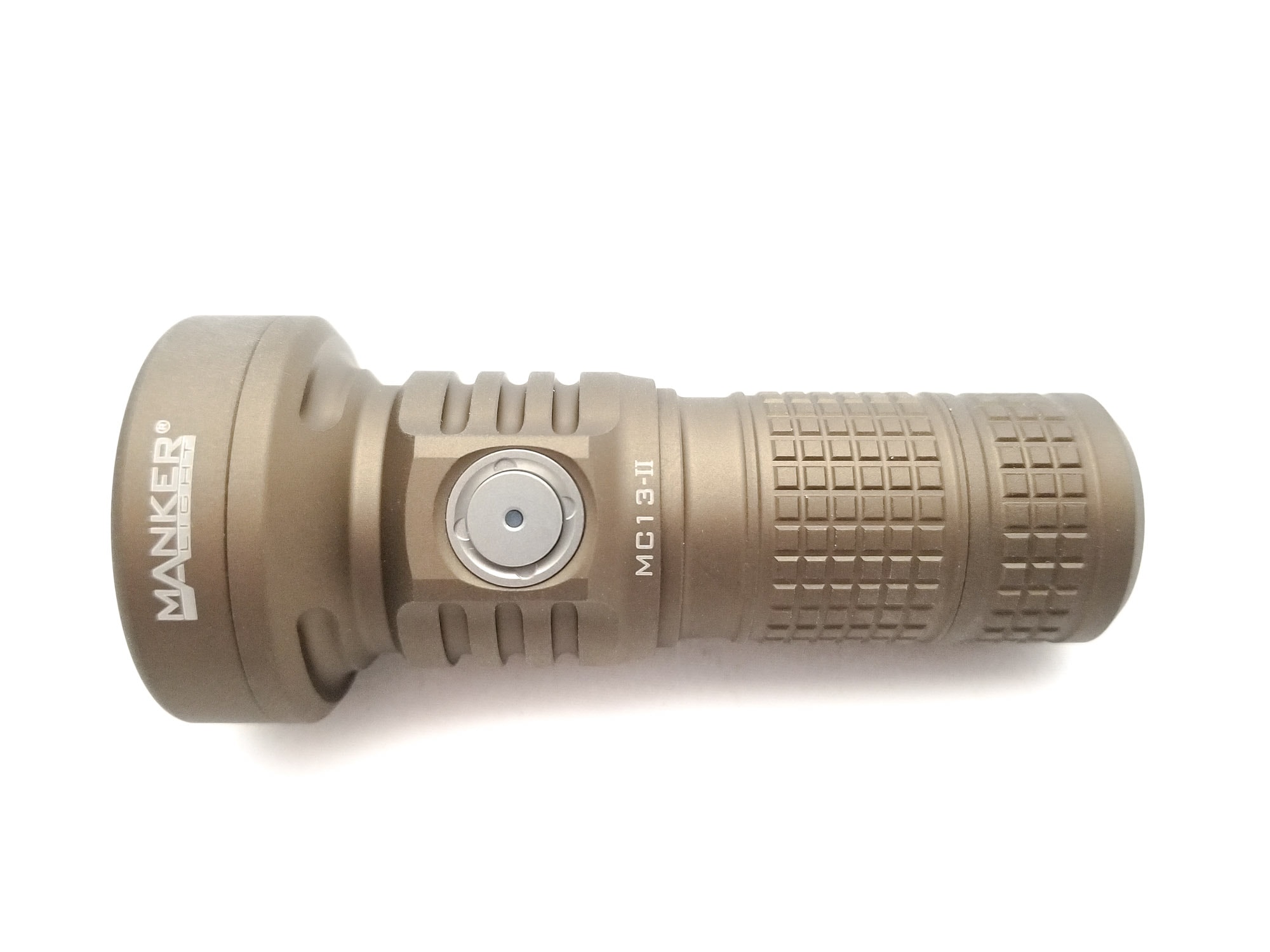
Manker MC13 II specs
| Brand & Model | Manker MC13 II |
|---|---|
| Flashlight category | Pocket thrower |
| LED | Luminus SFT-40-W |
| Max. output | 2000 lumens |
| Max. beam distance | 600 meters |
| Max. beam intensity | 90,000 cd |
| Battery config. | 1×18350 or 1×18650 |
| Onboard charging | Onboard USB type C |
| Modes | 7 |
| Blinkies | Strobe, Beacon, SOS |
| Waterproof | IP67 |
| Review publication date | April 2023 |
Review intro:
So far I’ve been able to sample a light from nearly every manufacturer of flashlight-y things, save for a few. Well, today’s the day I scratch another one off my list because I’ve got a Manker to test on. Mankerlight was founded by a couple of Chinese flashlight enthusiasts who turned their passion and ideas into products, which over time, have evolved from a few offerings to a pretty extensive product lineup of knives, EDC pieces, high output lights, flooders and throwers. They’ve existed as sort of a wallflower to the bigger brands, but recently, there’s been a few that have catapulted them into the enthusiast limelight. 1Lumen has done several of their more popular models including the MC13 and the high output MK38 Satellite. Manker lights are innovative and feature high performance feature sets.
Today I’ll be taking a close look-see at one of their smaller lights, the MC13 II. This is the second revision of the 18350 size pocket light Manker MC13 which Gabriel reviewed in 2020. That light was a dedicated pocket thrower featuring a Osram W1 and a big TIR optic that threw way too far for an 18350 size light (over 700 meters). The MC13 II came along a while later and sort of bumped the specs sheet to the moon with the optional (and slightly ridiculous) SBT90.2 or the much more useful and sensible Luminus SFT-40-W and added some interesting features like 18350/18650 battery interchangeability without swapping the battery tube. Nice.
Package quality.
Manker packages their lights nicely. Some come in neat tins with graphics, some in regular boxes. Here’s what you get:
- Manker MC13 II flashlight
- Lanyard
- 18350 battery
- 2 spare o-rings
- USB type C cable
- Silicone diffuser
- Warranty card
- Manual
This is a pretty standard loadout in this segment and everything you need to get going, even if you’ve never owned a flashlight before. I liked the padded lanyard with the Manker logo as well. You also don’t need a battery charger as any 5 volt output wall wart will suffice. My sample light also included a Manker- branded 3100 mAh INR high drain button top 18650.
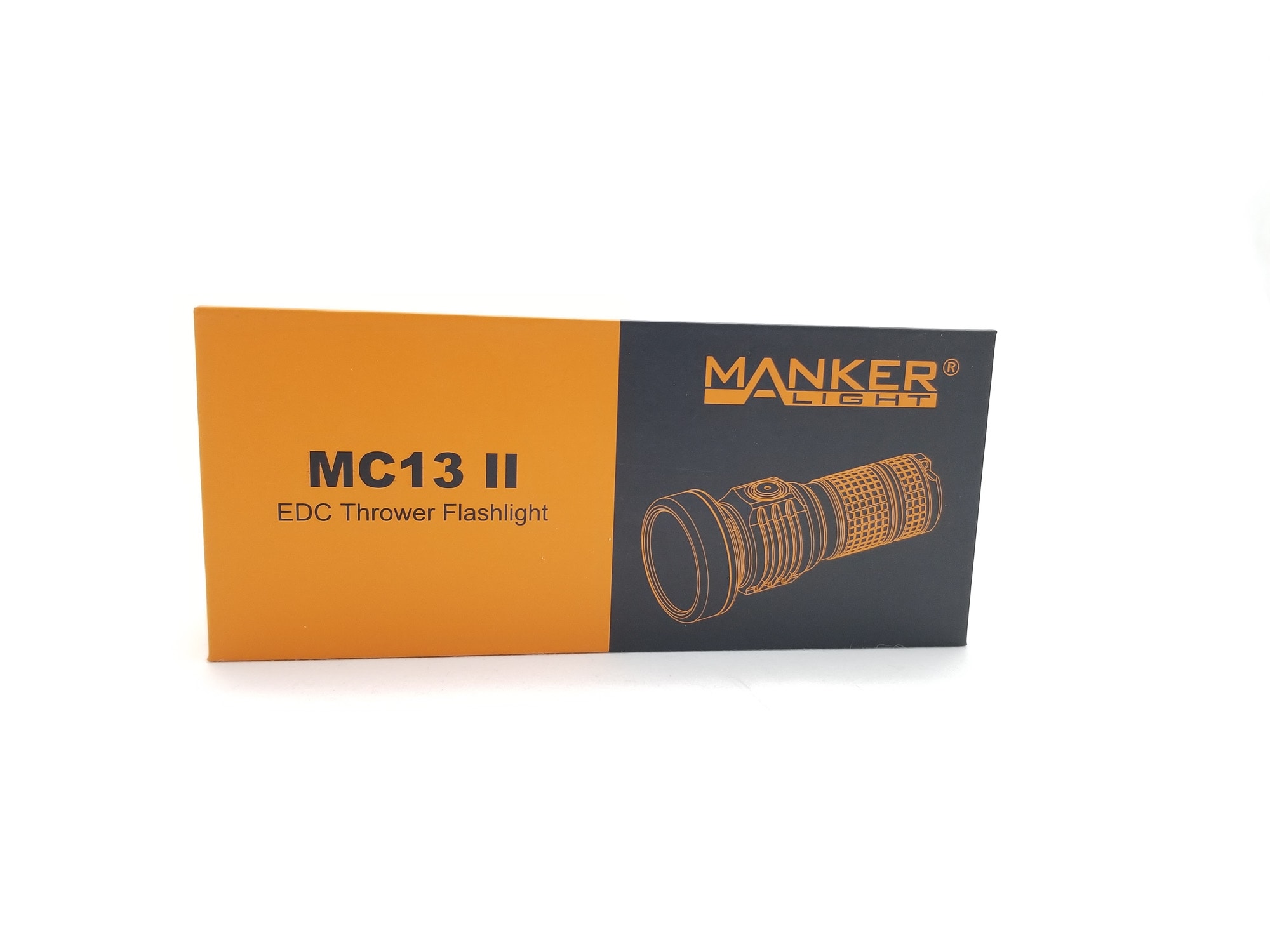
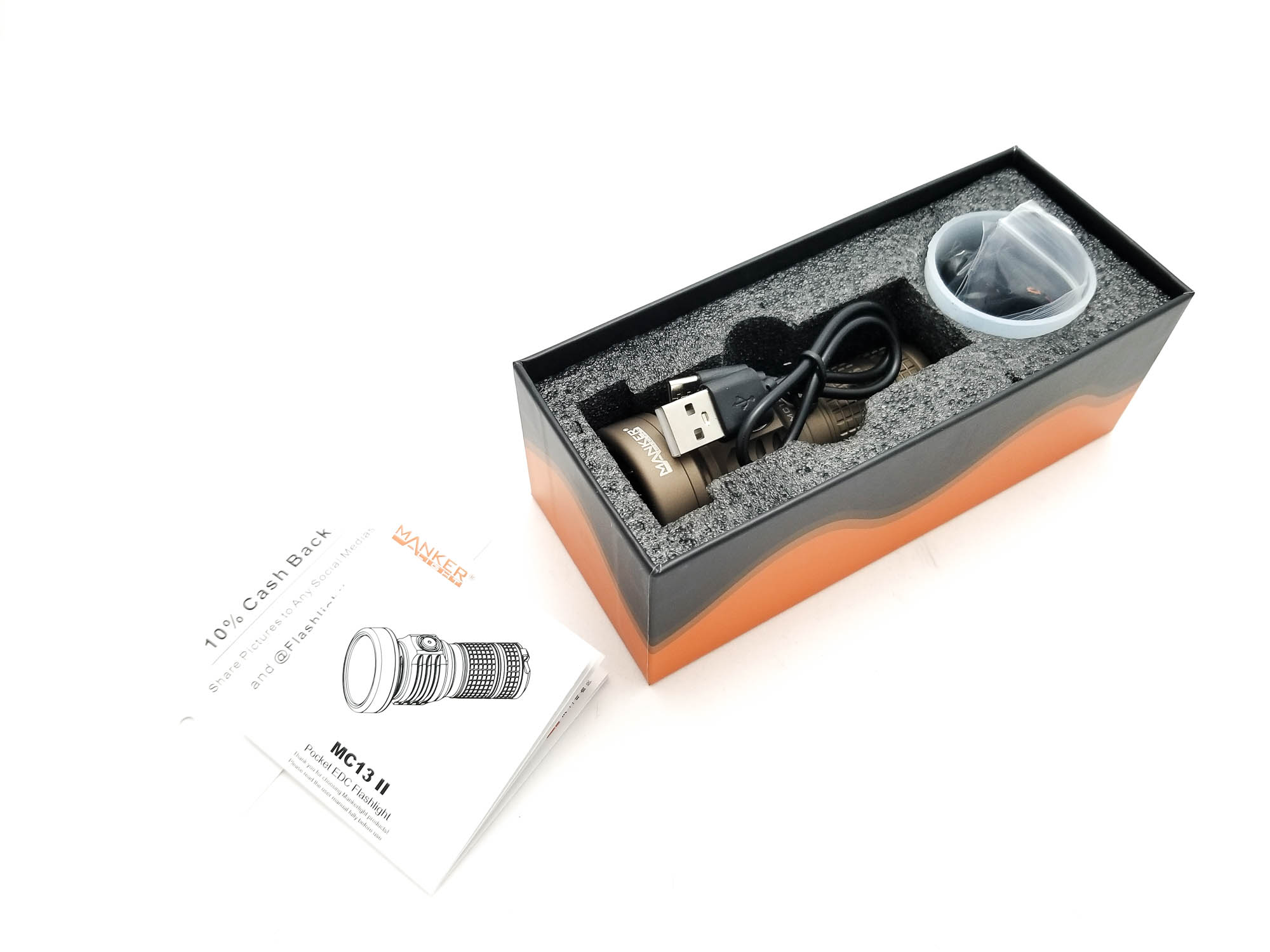
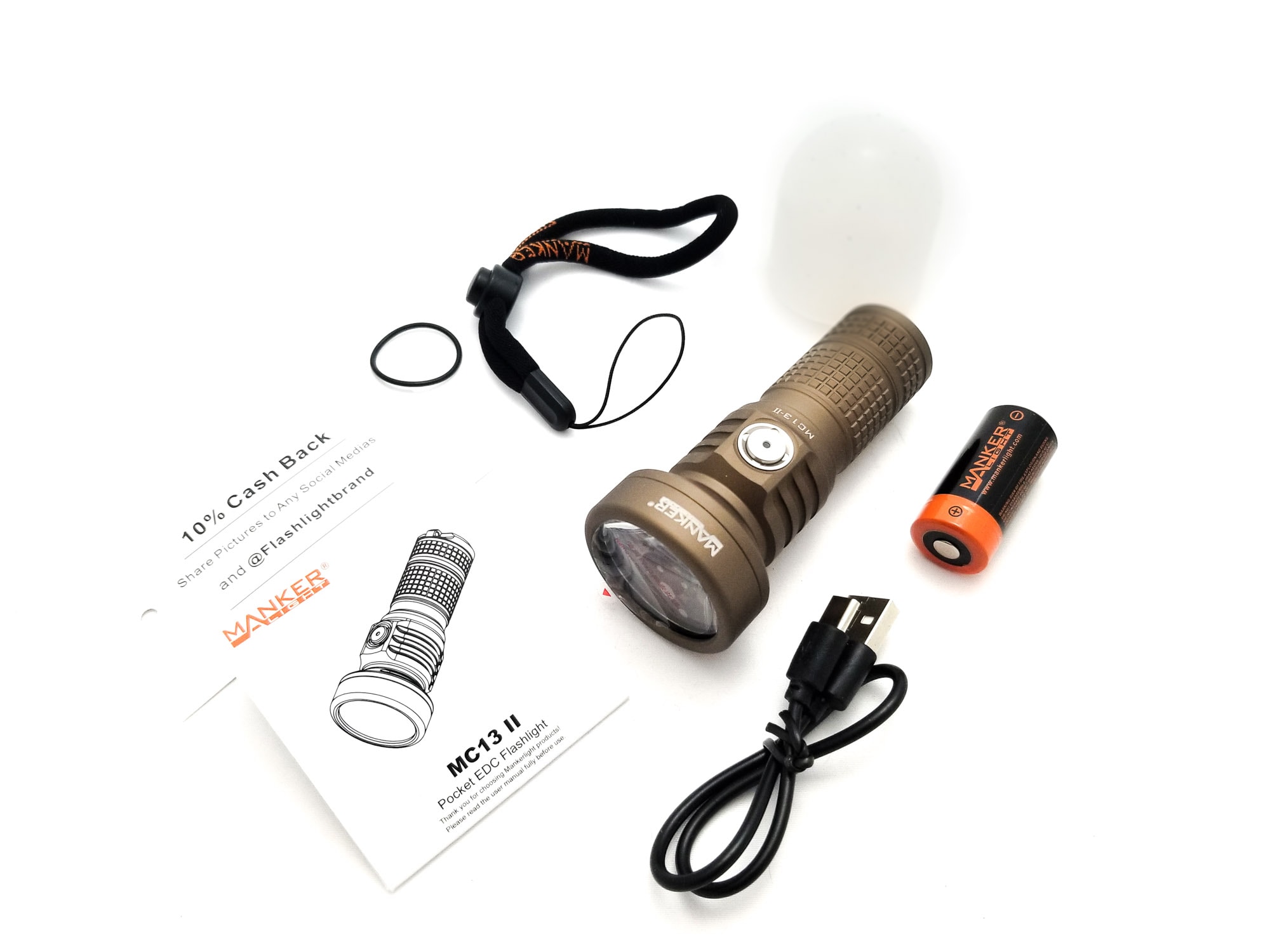
Flashlight in use
The MC13 II is a pocket thrower flashlight, so it’s going to give great throw figures and be pretty useful for up-close tasks too. Take it on a walk or hike, use it around the home, or illuminate things far away. It’s small enough to easily pocket, even in 18650 mode. With the 18350, it’s a pretty compact flashlight. Before you use the light, make sure to remove the insulator in the battery tube. My sample was also in the lockout mode which requires 4 quick clicks from off to unlock.
I really enjoyed handling the light. It’s nicely balanced, very compact in 18350 mode, and the small size makes it really easy to maneuver. I liked it as much as the Acebeam L17, and it was even a little easier to handle and more pocketable despite not having a pocket clip. There’s gripping surfaces in all the right spots, with the battery tube and tailcap featuring frag grenade style polygonal blocks and a bricky finish that really helps with grip. I had no trouble gripping the light in all hand positions, and it points very intuitively even in 18350 mode. With the tube extended in 18650 mode, it’s even nicer, despite the extended tube having a roughly 2.5 inch section of no texturing where it telescopes in and out. There’s a single e-switch for switching duties, and the button is covered in a fancy sandblasted 304 stainless steel cover, and is set in an equally fancy stainless bezel. The switch has a central LED indicator for battery state, charge, and on state, and it lights up for the first 5 or 10 seconds after turn on, but doesn’t stay lit and is not lit on standby. It’s set in a raised portion of the head, and is really easy to find by feel. The switch action is nice and predictable, with positive clicks and a nice feel.
Opposite the switch is the USB type C charge port covered with a nice silicone rubber cover. It fits flush to the body, and was mostly snag-free. There is a magnet in the tailcap, and although I’m not a huge fan of these on pocket lights, I think that’s an appropriate feature here. It’s decently strong, and helped the MC13 II cling to ferrous surfaces quite well. I got it to stably hold itself horizontally on a thin area (a pocket clip from another light). Tail standing is no problem either, and Manker includes a silicone diffuser that turns it into a pretty handy-dandy lantern.
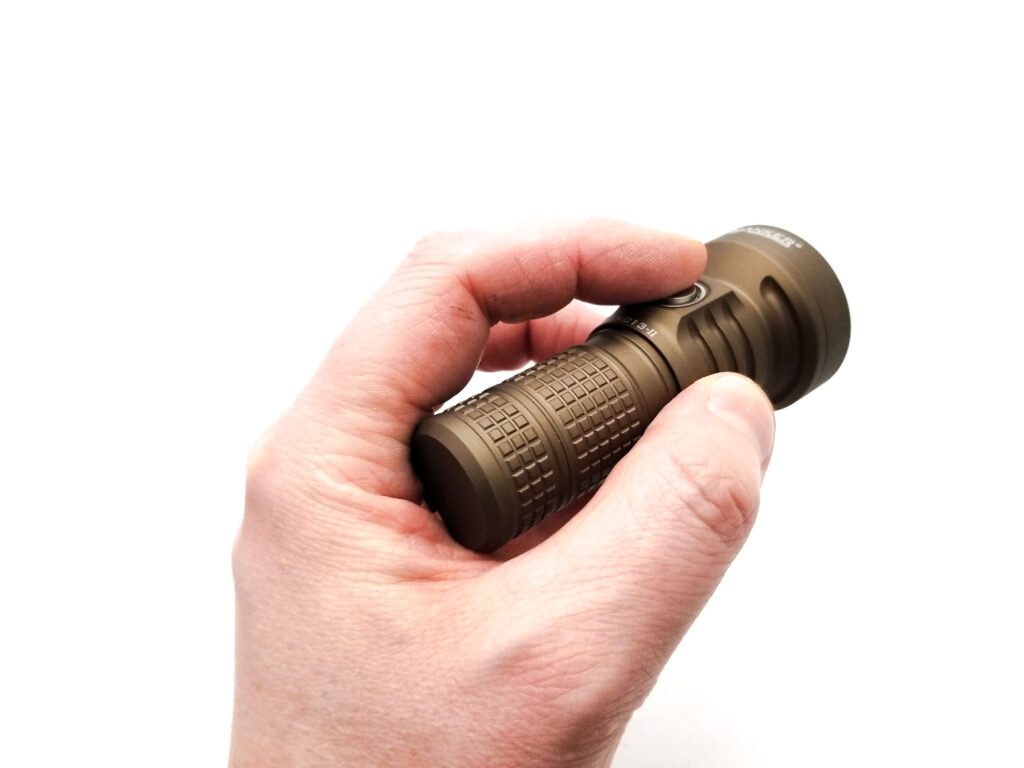
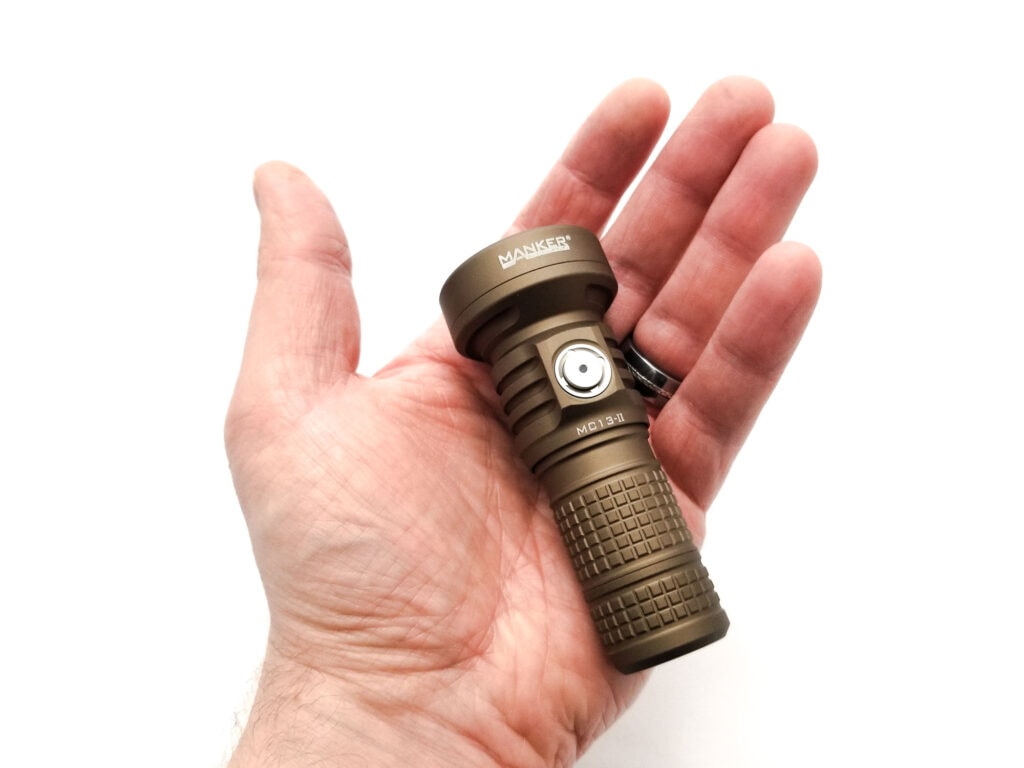
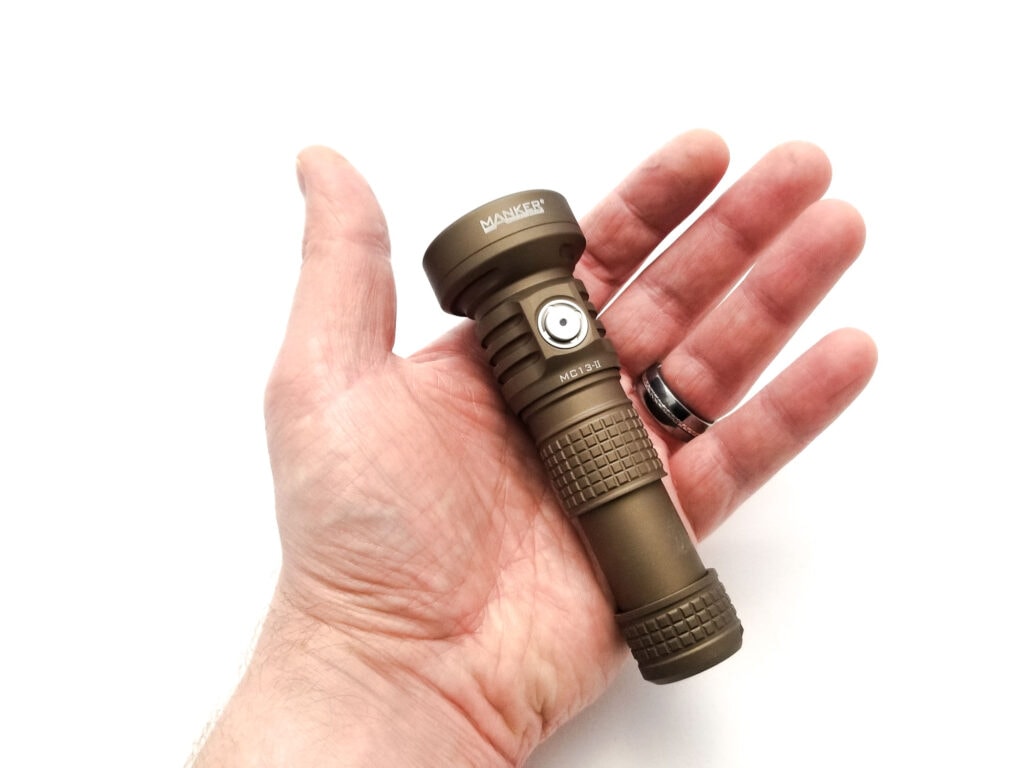
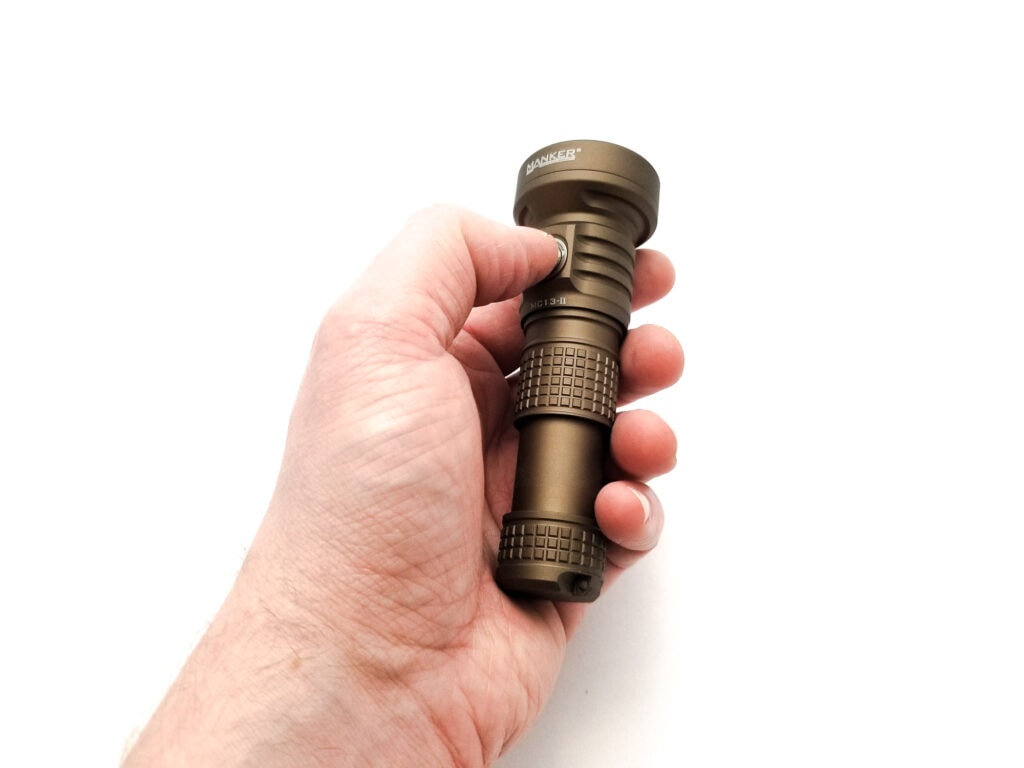
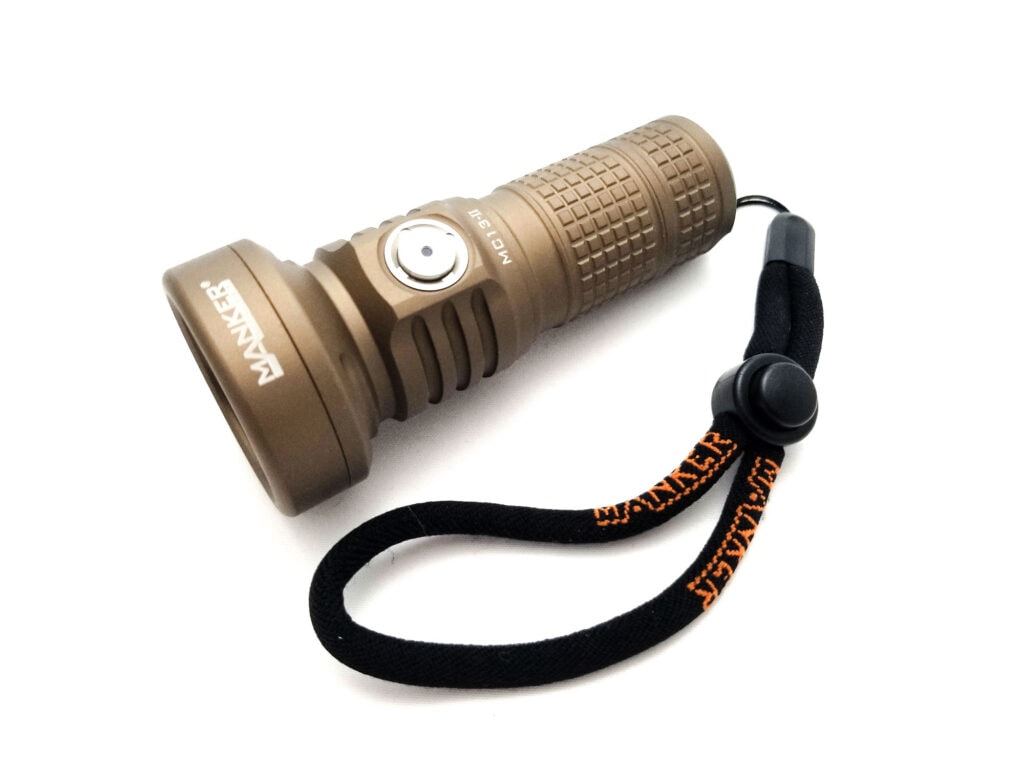
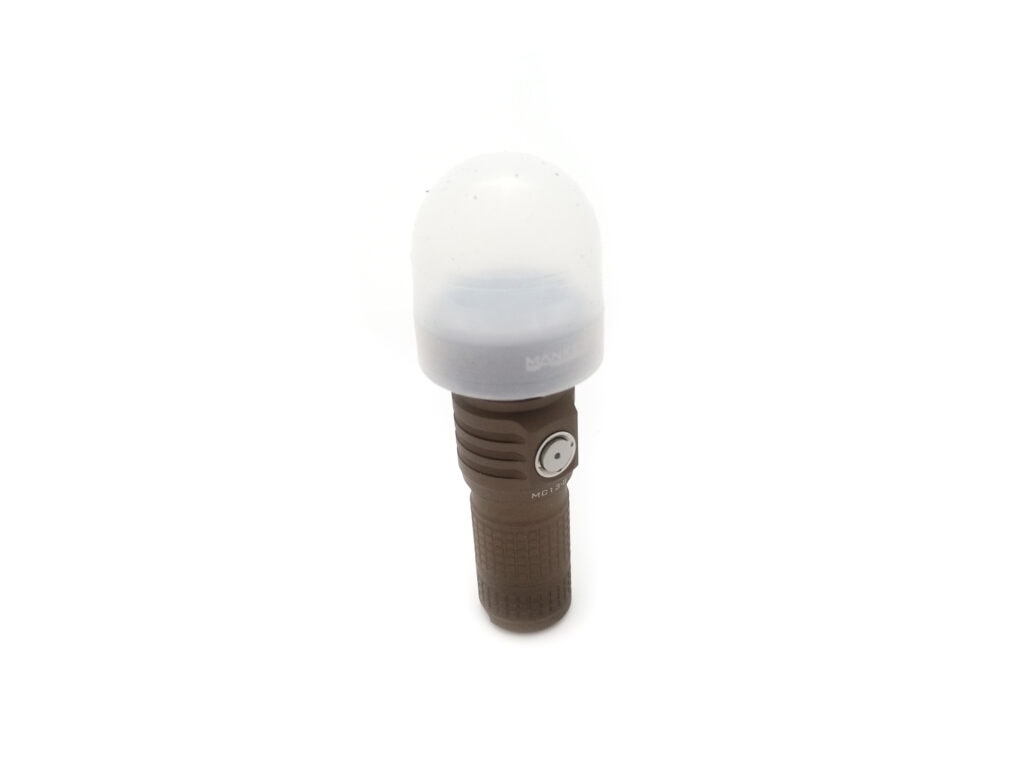
Build Quality and Warranty
This is my first go with a Mankerlight product, and first impressions are very positive. It’s a very nicely crafted and well-made flashlight. They fall somewhere in between Thrunite and Lumintop price-wise, and the MC13 II sample light as tested retails for around $65 US with the SBT90.2 version coming in around $100 US. I think it’s worth it.
The build quality is very, very nice, every bit as good as any Thrunite, Lumintop, or even Fenix and Olight product. It passes the maracas test fine, there’s no anomalous gaps or misaligned parts, everything lines up nicely, and the machining is free of defects or tool marks. Manker says it’s milled from the ubiquitous aircraft aluminum, so probably 6061-T6. The finish is advertised as type III HA, and it’s nicely done, with no defects, thin spots, or off-colors. The light comes in two colors, sand and black. My sample came in the sand color and I dig it. The anodizing is marketed as type III HA, and its decently bricky and nicely grippy, which I like. It’s also flawless, and had even coverage with no blemishes. All the edges are knocked down and smoothed as well. If you fancy to do so, the bezel can be unscrewed by hand and you can liberate the optic. Under that optic, the LED shelf is very finely machined, and the LED sits on a DTP copper MCPCB. I couldn’t see any thermal paste, but I’m sure there’s some under the MCPCB. The solder joints look fantastic, and there’s no flux residue.
Interestingly, the driver has a single, small spring, which I wasn’t expecting. This is a nice feature usually seen on tactical-use and professional lights since it adds durability. Peering down the battery tube shows a press-fit, larger tail spring. The threads on the tube are fully anodized, triangular cut and pretty smooth, but could benefit from some lube. I use SuperLube synthetic grease for my lights, and I recommend that or silicone paste. The inner threads for the telescopic battery tube are bare and petty smooth also, but not lubed either. There’s o-rings sealing every major joint including the lens, and Manker gives this MC13 II an IP67 rating. I can attest the light is sealed up nicely, since removing and replacing the battery tube created positive pressure inside the light, evidenced by the charge cover making a pfft noise when opened. This leads me to believe there’s an o-ring sealing the telescoping battery tube.
For the warranty, Manker gives you a decent one with a 5 year term. Take it away Manker! Mankerlight provide high-end products and intimate 5 Years warranty service to dealers and end users. Mankerlight provides easy, reliable, speedy service to all lights under our warranty. Dealers will be responsible for customers. 1. Please contact the dealer for replacement if you experience any problem with Manker product within 15 days. 2. The dealer will offer free repairment service or replace the flashlight with the same or similar model if Mankerlight flashlight fails during normal use within a period of 5 years. 3. LEP flashlight, rechargeable battery, flashlight with built-in battery are warranted for a period of one year (12 months) from date of purchase.
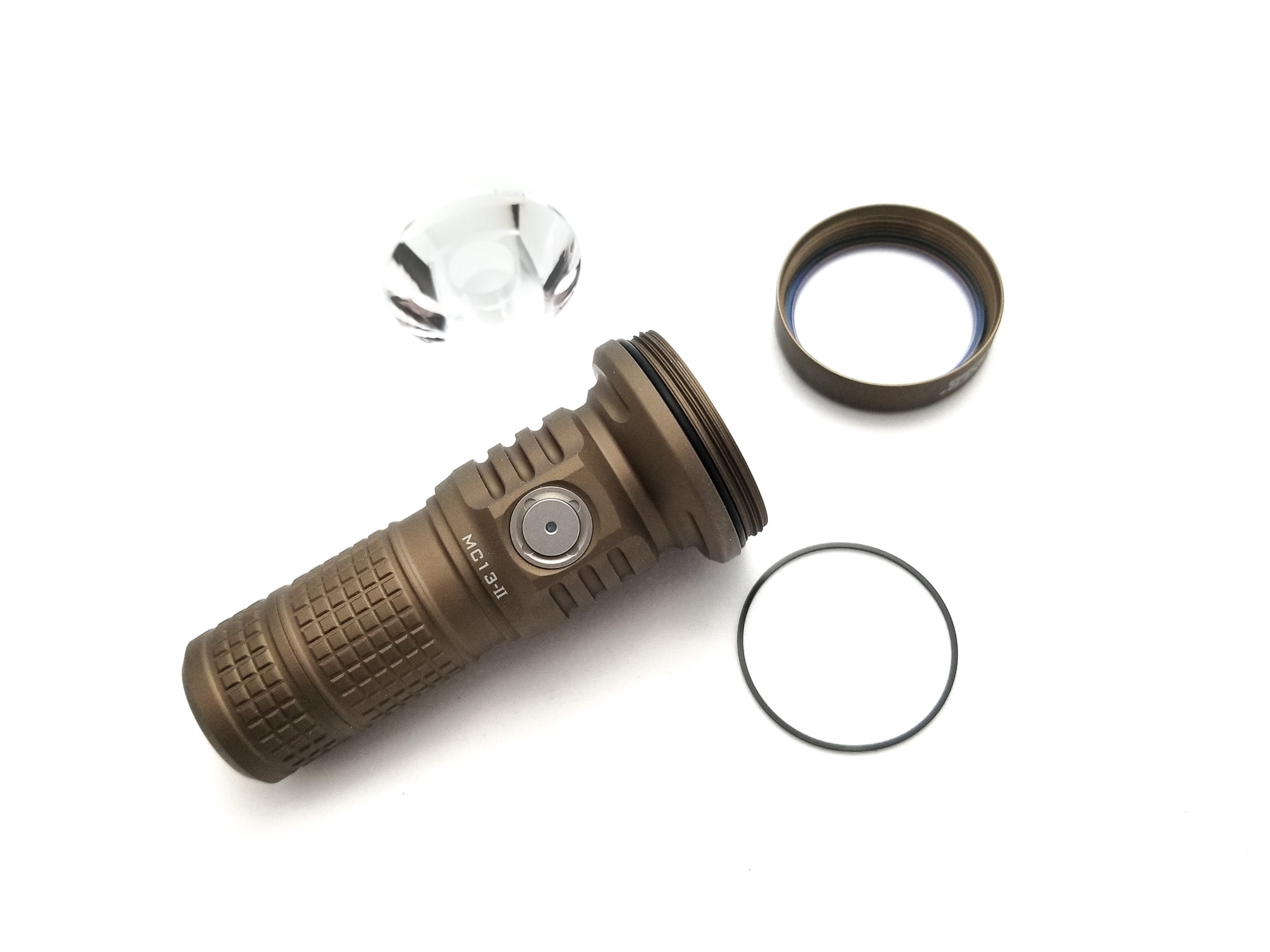
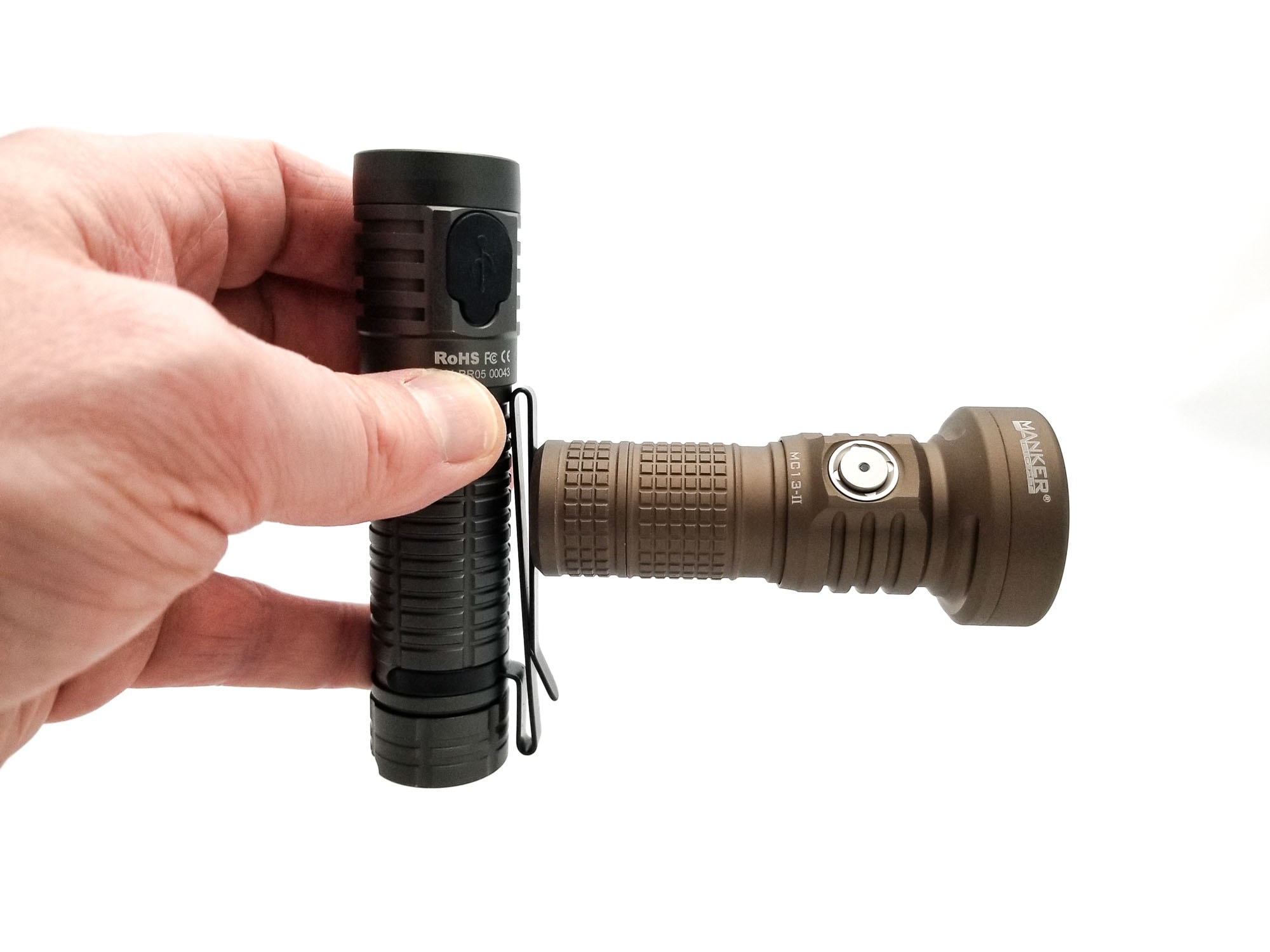
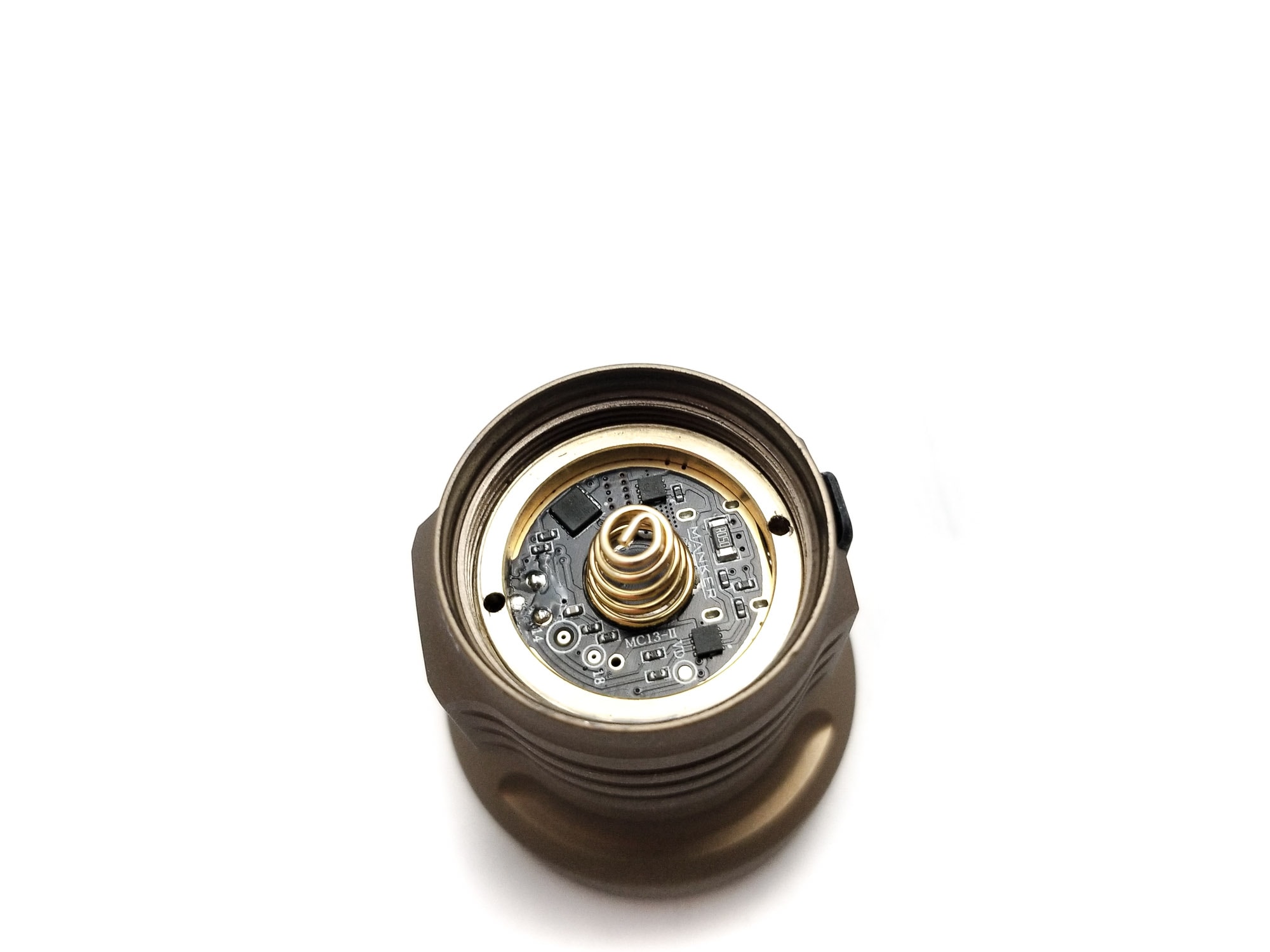
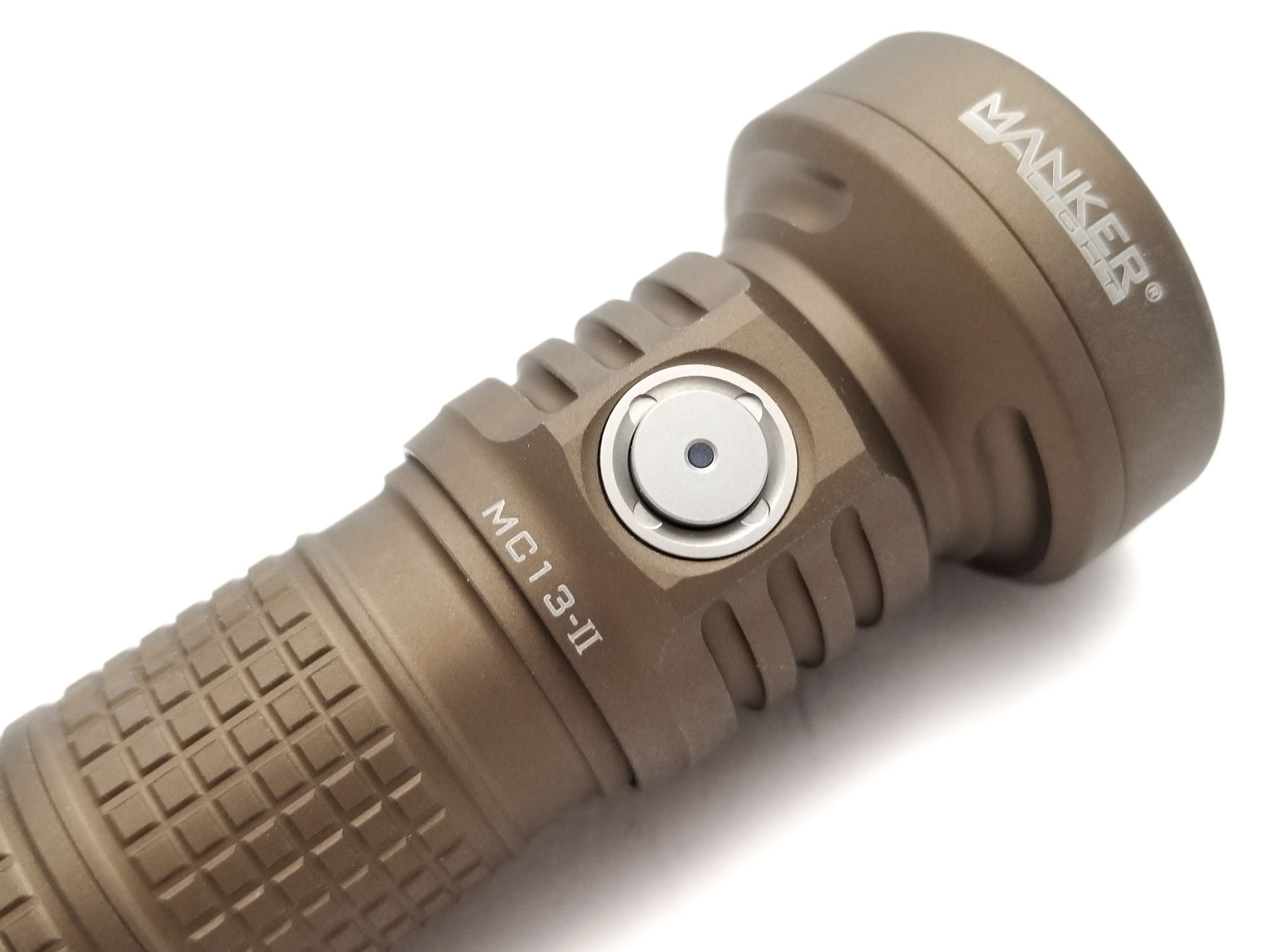
LED, Lens, Bezel, Beam, and Reflector
The first MC13 came with the Osram KW CULNM1.TG emitter, affectionately known as the W1. Unlike most LEDs on the market, you could order the LED in a bunch of colors besides white (red, blue, yellow, and green). In the white tint, it was good for 760 meters of throw, but only about 900 Lumens. The MC13 II bumps it up a bit, adding the ridiculous SBT90.2 or my sample light’s much more sensible Luminus SFT-40-W. I think it’s a great LED for a compact thrower. It’s domeless, and has a new design with a homogeneous LES and robust construction with 4 bond wires. It can handle higher power levels than the older (but still relevant) SST40, so it can be driven harder, and doesn’t give up any output even though it’s domeless. It has excellent throw as well, thanks to very high luminance and cd/mm2. The SFT-40-W is only sold as a cold white tint somewhere between 5500 and 6200K at low CRI.
The bezel is aluminum and monochrome with the rest of the light. It extends a bit above the lens for some protection, but not much. The centerpiece of the MC series is the absence of a reflector, instead swapping it for a large TIR lens like the Acebeam E10, L17, Thrunite Catapult Mini, and Sofirn IF22A. This one has a nice dual AR coated mineral glass lens protecting it as well for maximum durability, which is nice since it’s easier to replace a lens than an optic. For those who don’t know, TIR stands for Total Internal Reflection, and relies on angles and internal reflection to focus and project the light. There’s a lot of complicated science that goes into making TIRs work, like the black magic of making transparent material reflect light, and it’s above my pay grade, so check out this link for more information: https://en.wikipedia.org/wiki/Total_internal_reflection
The beam is a nice mix of distance and somewhat useful spill, but since this light is mainly designed for distance there’s not as much side illumination as you’d get from a similar sized reflector light, so if you’re needing bright spill, you might be disappointed with the MC13 II. The spill is very soft and diffused with a tightly focused hotspot, typical with a thrower. You could use it for up close work, but this is still designed for throw. For tint, Luminus products are a bit green at low currents, but the SFT-40-W is usually the exception to that. At 1 meter from the sensor, the Opple lightmaster Pro has the CCT at 6407K and CRI Ra at 66.7. The duv is positive at 0.0062 and less green this time.
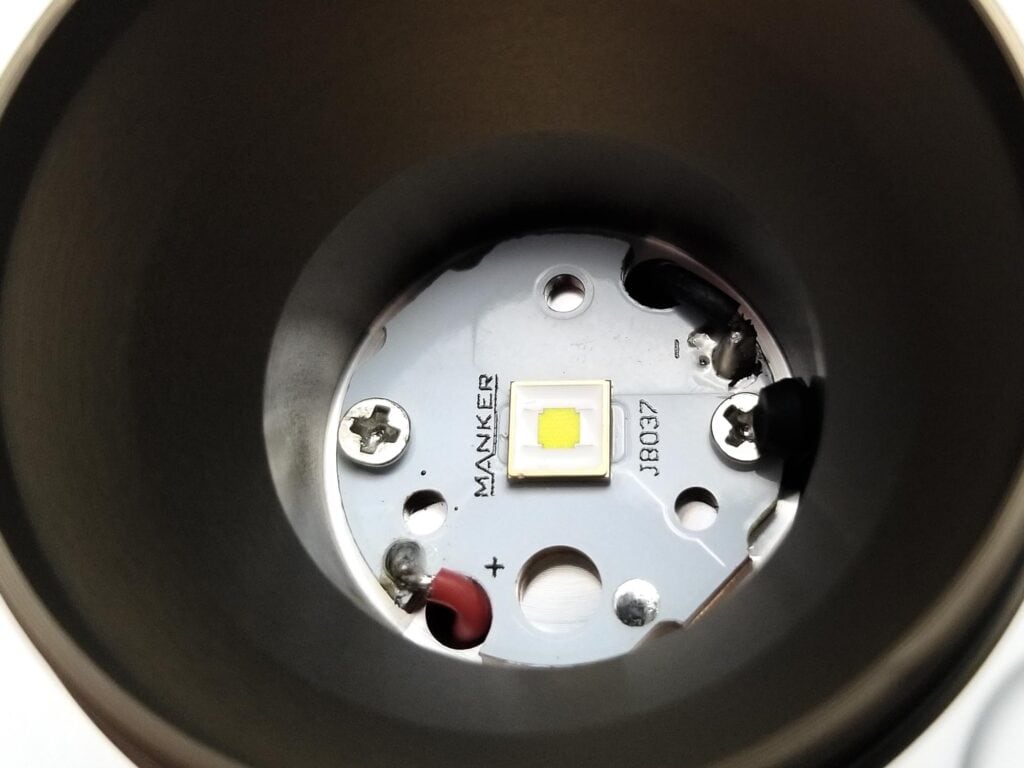
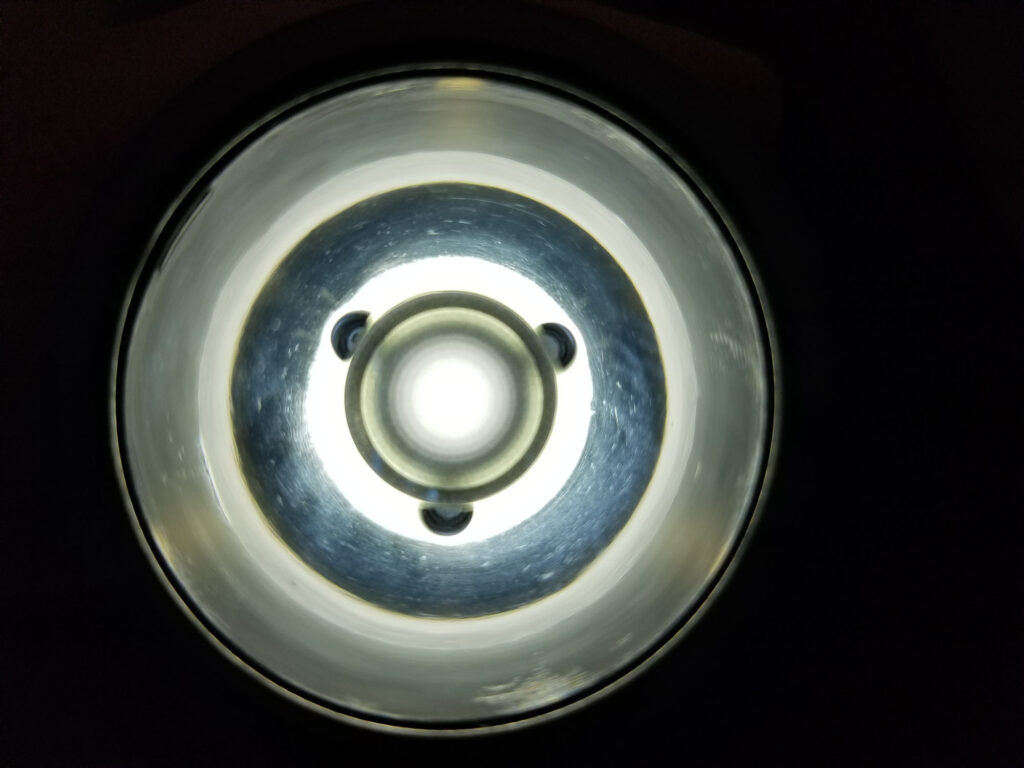
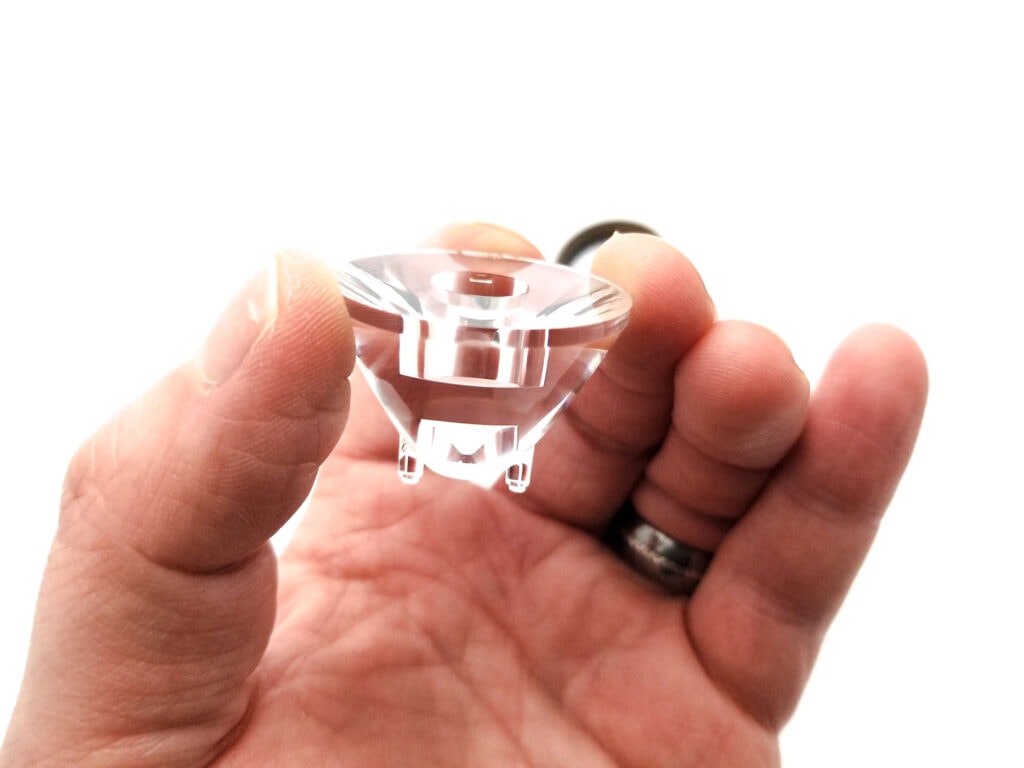
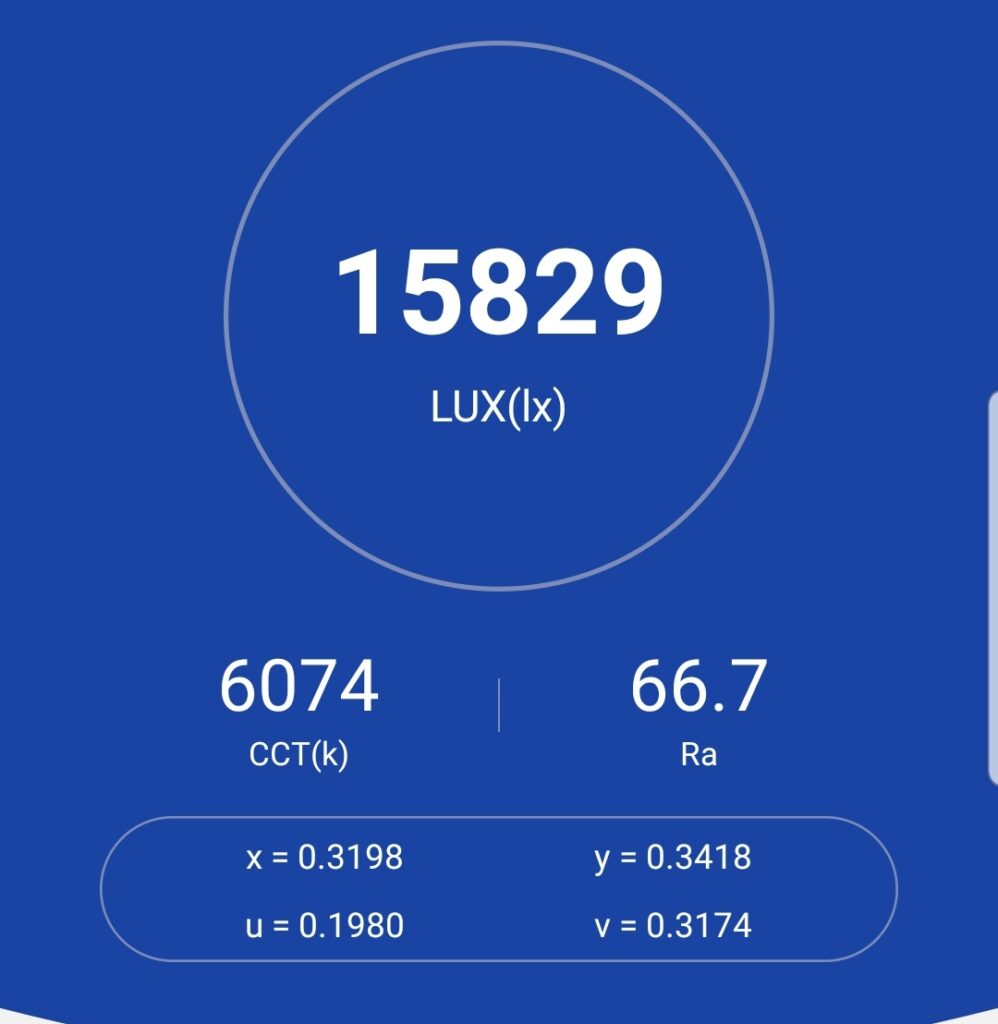
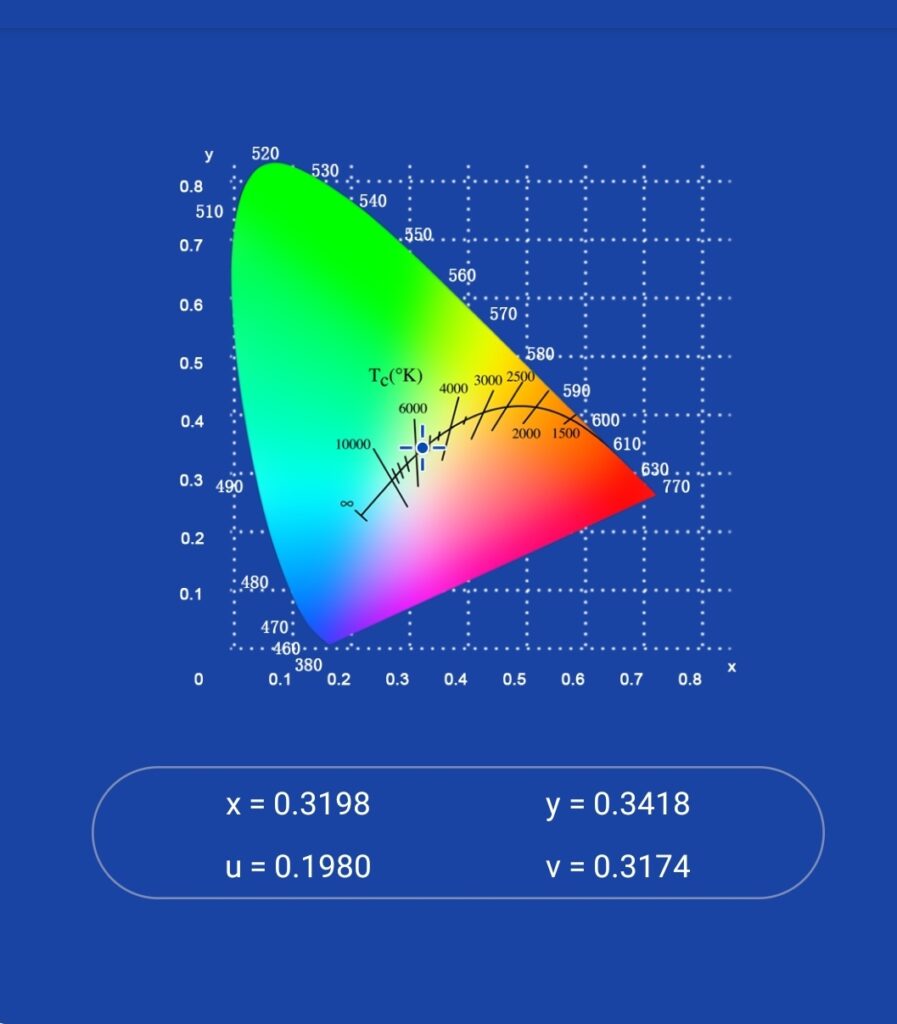
Dimensions and its competition
Dimensions:
| Manker MC13 II | Millimeters | Inches |
|---|---|---|
| Length (18350 tube) | 91 mm | 3.6 in |
| Length (18650 tube) | 118 mm | 4.5 in |
| Head diameter | 40 mm | 2 in |
| Body diameter | 26 mm | 1 in |
Dimensions are rounded to the nearest millimeter, and to the nearest tenth of an Inch.
Weight:
| Weight in grams | Weight in oz | |
|---|---|---|
| Without battery: | 99 g | 3.5 oz |
| With Manker 18350 battery | 126 g | 4.4 oz |
| With Manker 18650 battery | 145 g | 5.1 oz |
Weight is rounded to the nearest gram, and to the nearest tenth of an Oz.
Flashlight size comparison with its competition:
Group 1: Thorfire C8, Manker MC13 II (18650 battery), Astrolux EA01, Acebeam L17
Group 2: Emisar D1, Wurkkos TS25, Fenix PD35 V3, Manker MC13 II
Group 3 TIR optics: Manker MC13 II, Acebeam L17, Astrolux EA01
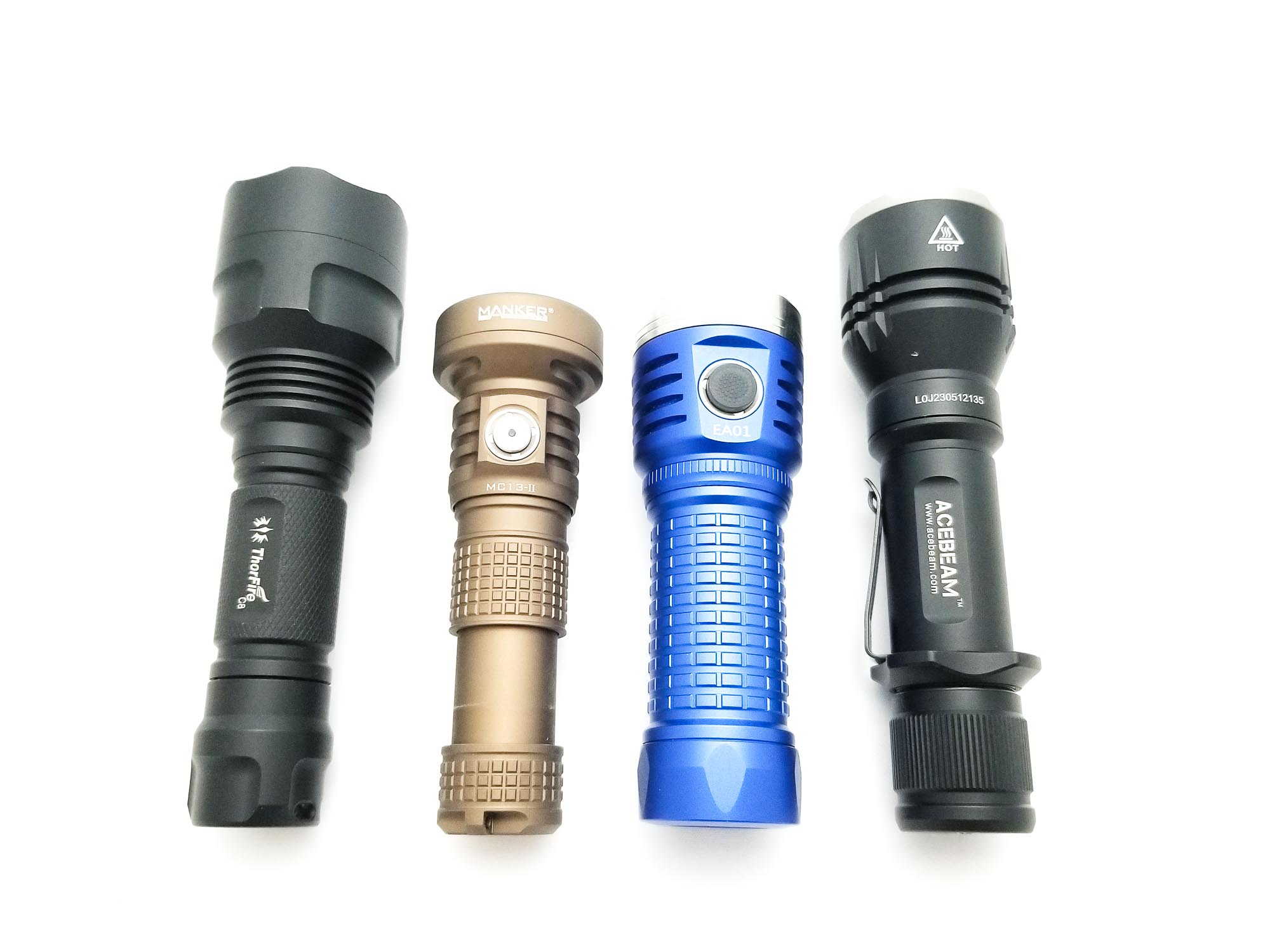
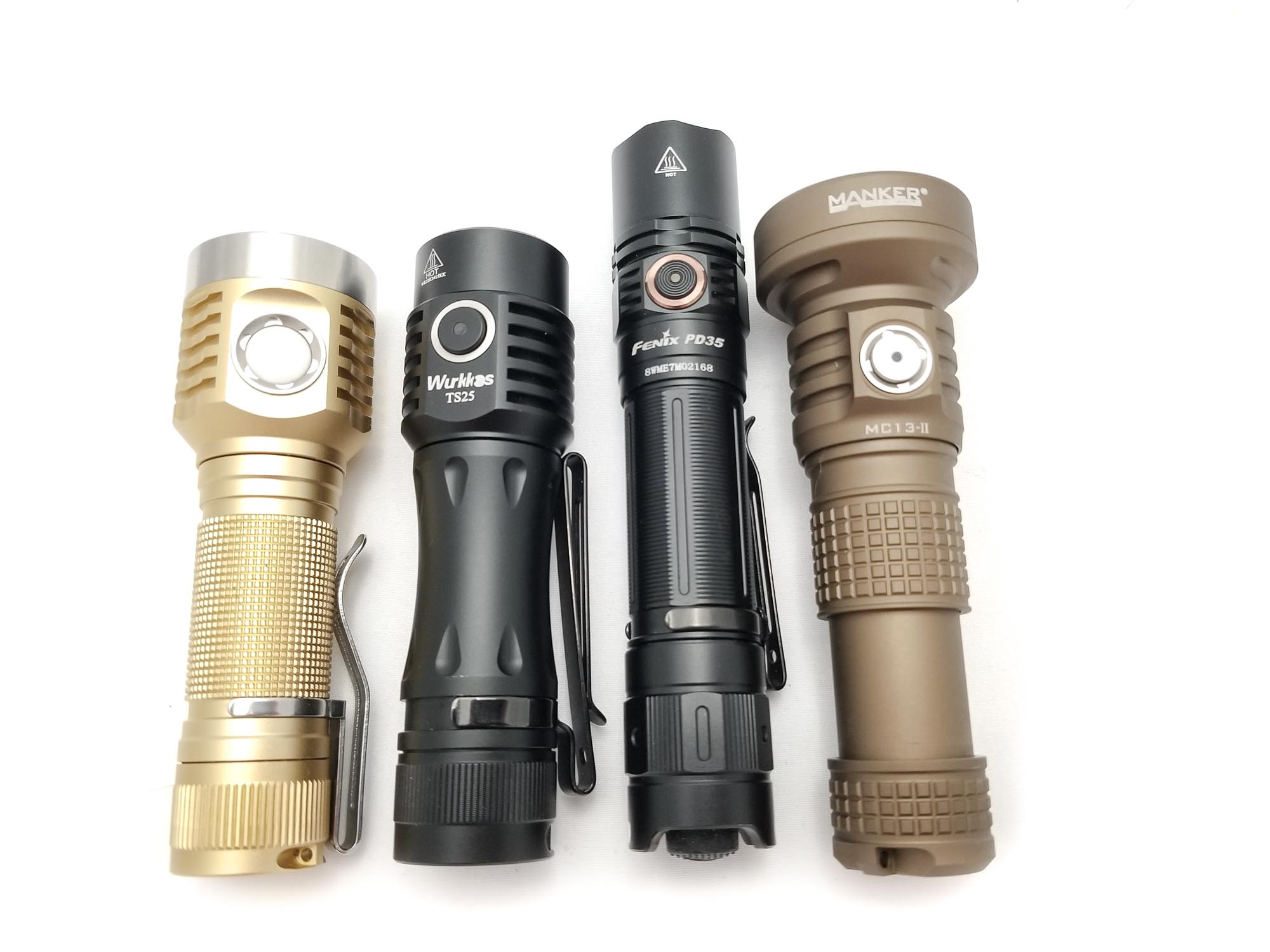
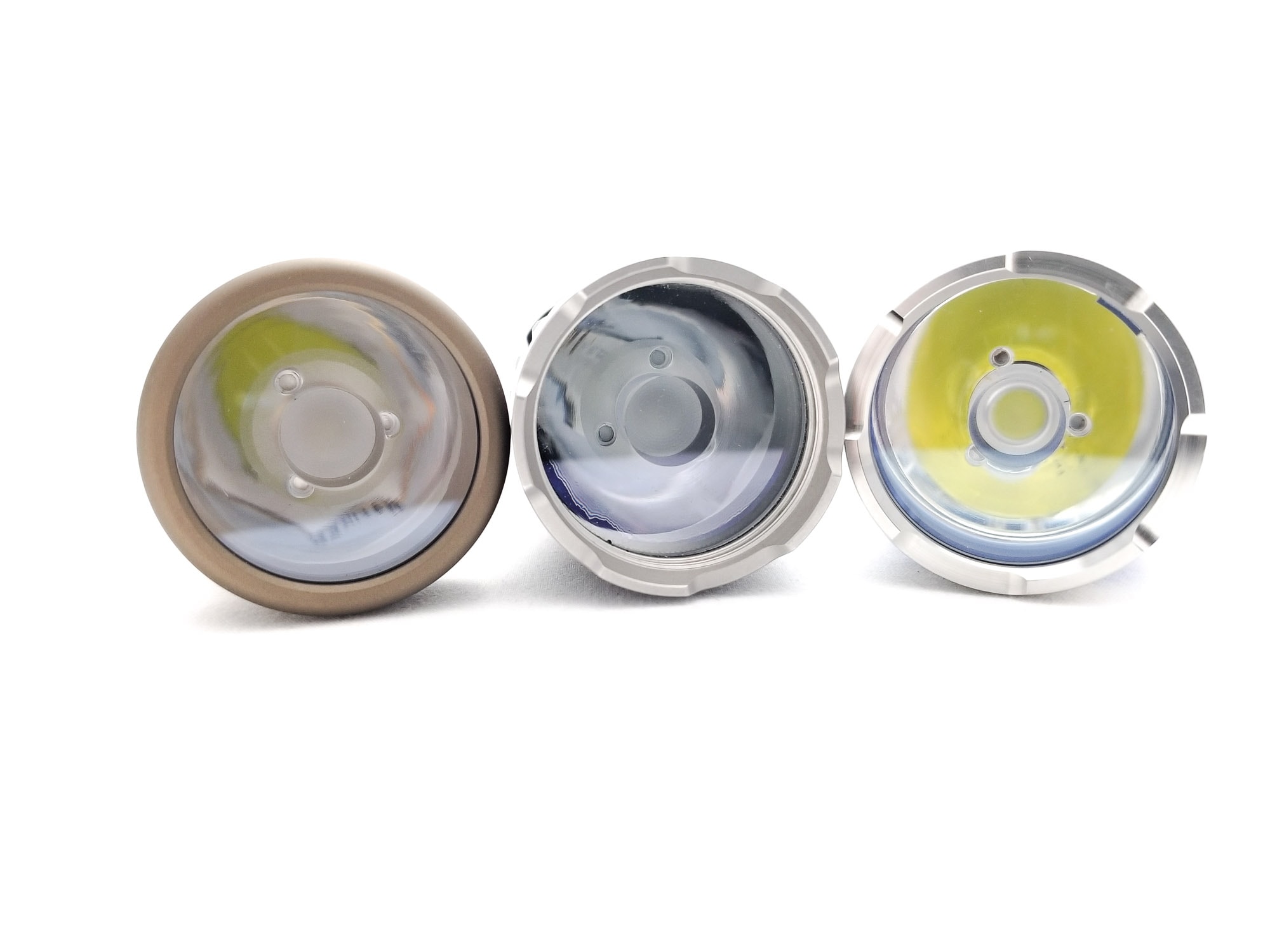
Manker MC13 II UI: User Interface and Driver
Manker only gives a small clue about the driver, described as a non-PWM constant current digital circuit. That could mean anything, so we’ll see what the runtimes show. I’m thinking it’s a buck driver, but again, the runtimes keep flashlights honest. For the UI, it’s a simple UI, click on, click off, press and hold for modes, with all the commensurate shortcuts. Very simple and intuitive. There’s a special mode group for the Ultra low modes and one for the blinky modes, accessed by clicking and holding from off, or triple clicking from off or on for the blinkies.
Available modes:
- Moonlight, Ultra low 1, Ultra low 2, Low, Medium, High, Turbo
Available blinky modes:
- Strobe, Beacon, SOS
From OFF:
- Single click switch: Turns on in last memorized mode
- Long press switch: Turns on in Moonlight
- Double click switch: Turbo
- Triple click switch: Strobe
From ON:
- Press and hold switch: Switches modes L-M-H-L
- Single click switch: Turns off
- Double click switch: Turbo
- Triple click switch: Strobe
Mode memory:
- Last mode memory for the main mode group L-M-H. Turbo is not memorized.
Shortcuts:
- Click and hold from off activates Moonlight/Ultra low mode group. Press and hold for 1 sec. to switch between the modes in the group Moonlight-Ultra low 1-Ultra low 2.
- Double click for Turbo
- Triple click for Strobe/special blinky mode group. Press and hold 1 sec to switch between Strobe-Beacon-SOS
Low voltage warning:
- The LED indicator on the switch shows battery state. The LED is solid blue and stays lit for 10 seconds after turning on when the battery is >3.4 volts. The LED is purple after turn on for 10 seconds if the battery is 3.4 to 3.2 volts, the LED turns red and stays lit continuously for 3.2 to < 2.8 volts. Manker specifies LVP shut down at under 2.8 volts.
Strobe/blinkies
- Strobe, SOS, Beacon
Lock-out mode:
- Manual lockout by unscrewing the battery tube ⅛ turn, or electronic lockout activated by 4 clicks from off. The light will blink 4 times to acknowledge the lock, and the switch LED will glow when clicked if locked. Repeat to unlock.The light remembers the last mode that was selected when switched off and locked and starts in that mode when unlocked.
PWM
- None visible
Additional/summary info on the UI:
- This is a nice, simple and straightforward UI, and I really like it. While the multiple mode groups for the Ultra low and Moonlight mode and the special mode set for the blinky modes could be useful, I think it’s a bit unnecessary and adds complexity. Why not just incorporate an Ultra low mode in the regular UI? Also, the Ultra low 2 looks really close to Low mode.I do think blinkies should be hidden though, so kudos to Manker for that. There should be ATR with Turbo mode, since this is a small host and will heat up quick, but yep…I’ll test that.
Manker MC13 II Charging and batteries
The original MC13 took a single 18350 size li-ion battery, and while it’s great for keeping the form factor small, it’s still not that great for a high power flashlight. Manker realized this and gave the MC13 II 18650 size battery compatibility. The kit included a Manker-branded button 1100 mAh high drain 18350 li-ion cell. For those not in the know, in case you’ve wondered where the 18350, 18650, 16430, 10440, and 21700 comes from, well, here you go: These figures designate battery size. 18350 means a battery that’s 18 mm diameter and 35 mm long.
Here’s what makes the MC13 II special: It can accommodate both an 18350 and 18650 without swapping the battery tube! Manker did this by incorporating a telescoping battery tube, so you’ve got a tube within a tube. It’s a really unique design, with the inner tube having threads on the bottom most part that threads into a short threaded section of the outer tube. To switch to 18650 size batteries, unscrew the battery tube, then unscrew the tailcap. The tailcap is fixed, so turning it just loosens the inner tube. Once it’s free of the threads, it will open up and extend.
Insert the battery the normal way, negative end to the tail, positive to the driver, and screw in the battery tube. Easy peasy. Battery compatibility is not going to be an issue. A VapCell M11 18350 fit fine, and it happily digested a bunch of 18650s including flat top, button top, and a protected button top 18650. Manker did well here and added onboard charging. It’s USB type C, and rated for 2 amps. My Ruideng AT35 showed 1.93 A and my Hidance type C tester showed the same on type C to type C..
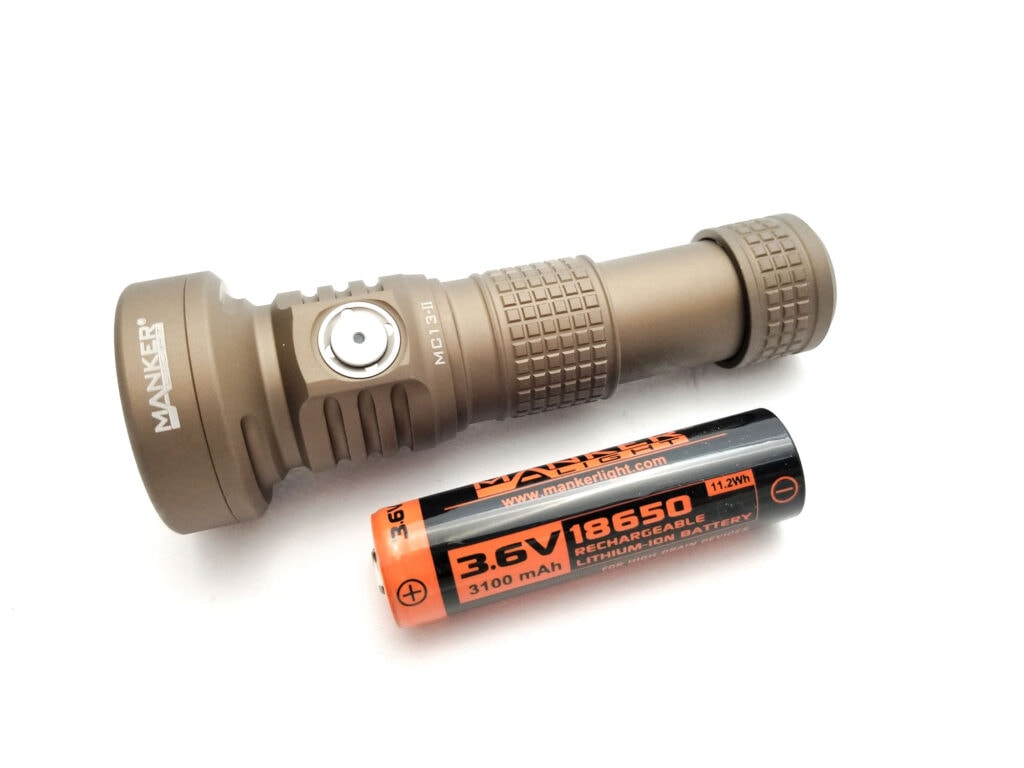
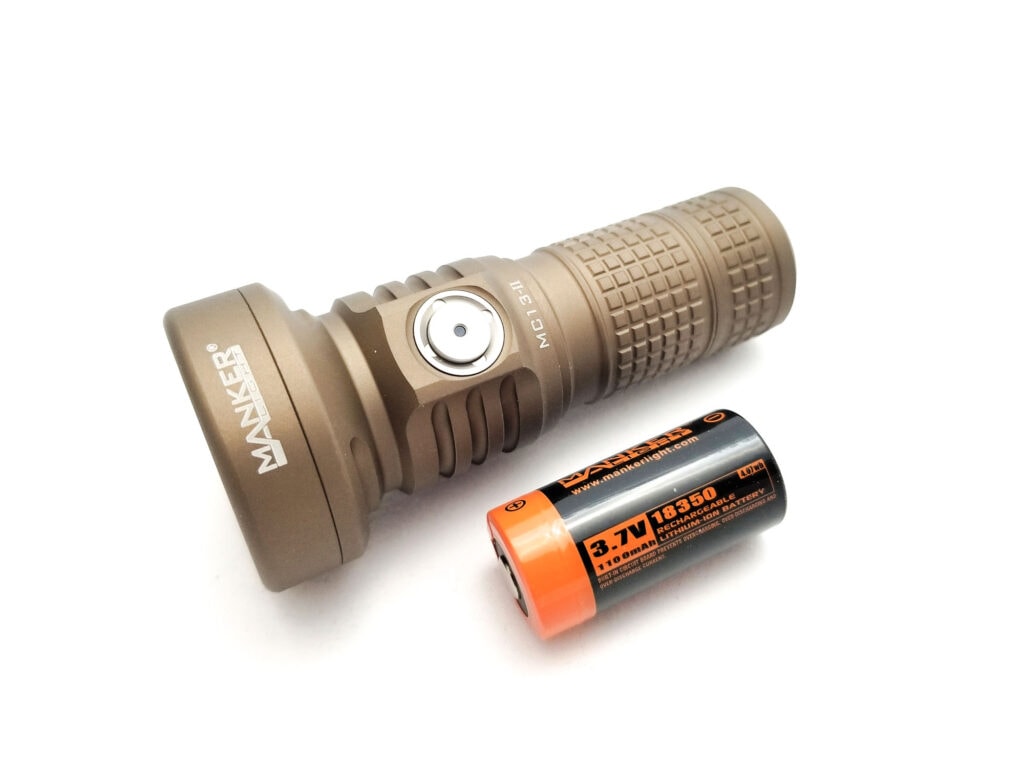
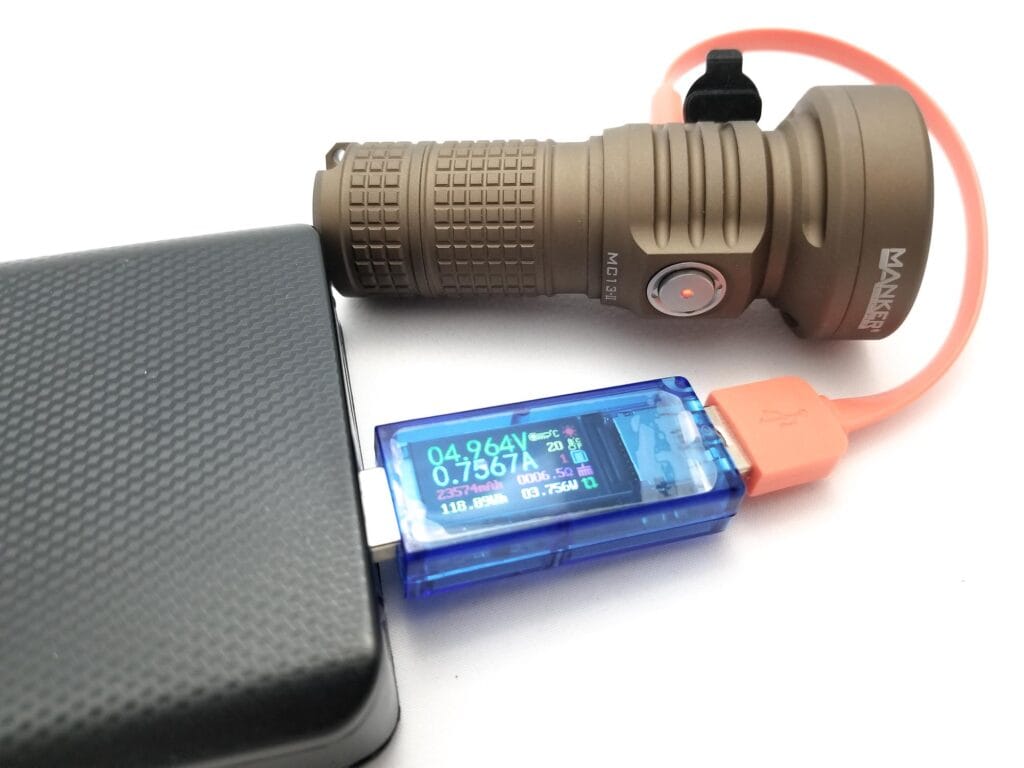
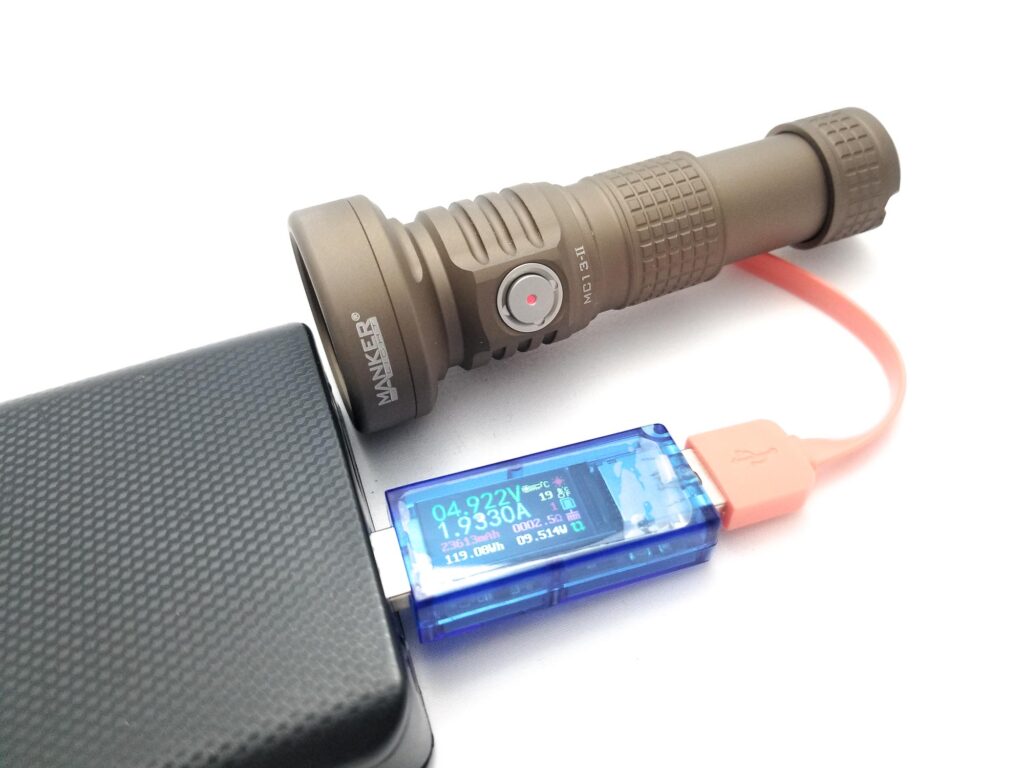
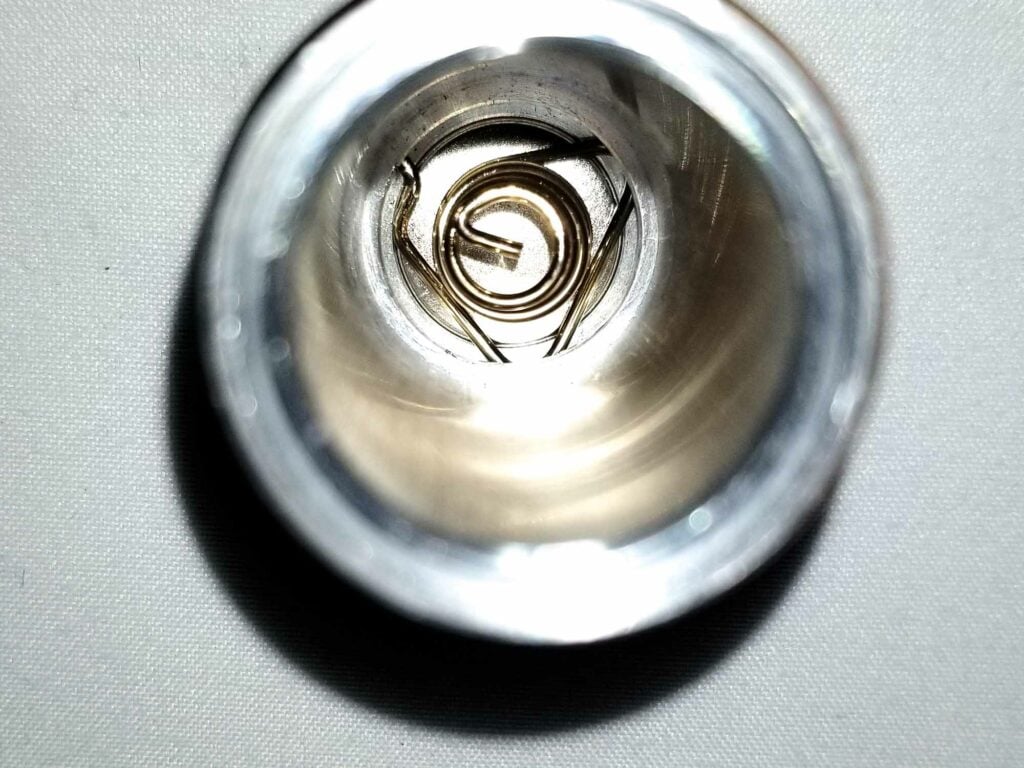
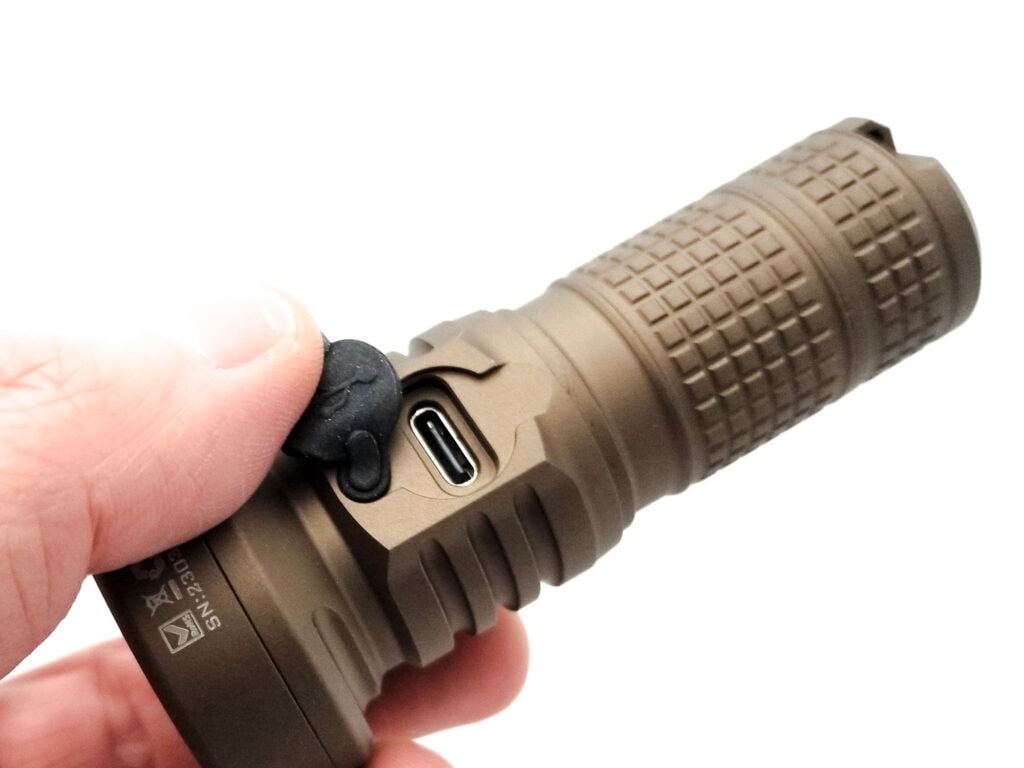
Performance test
Lumen measurements (for each mode)
Lumens are measured in my 50 cm integrating sphere with a Digi-Sense 20250-00 data logging luxmeter. The sphere has been calibrated with a Convoy S2+ measured to 260 Lumens and the figures are within 10% of actual. I used the included Manker branded 18650 and tested Medium, High, and Turbo modes. No amps this time due to the isolated current path.
| Mode | Specs | turn on | 30 sec | 10 minutes |
|---|---|---|---|---|
| Moonlight | 0.1-2 | 0.12 lm | 0.12 lm | – |
| Ultra low 1 | 20 | 18 lm | 18 lm | – |
| Ultra low 2 | 50 | 50 lm | 50 lm | – |
| Low | 100 | 134 lm | 134 lm | – |
| Med | 450 | 477 lm | 473 lm | 465 lm |
| High | 750 | 615 lm | 652 lm | 672 lm |
| Turbo (18350) | 1800 | 1119 lm | 1021 lm | 529 lm |
| Turbo (18650) | 2000 | 1414 lm | 1365 lm | 541 lm |
Manker publishes specs with both the 18530 and 18650 batteries, and the outputs are the same except Turbo, which is spec’d for 1800 for the 18530 and 2000 for the 18650. I’m getting a lot less for High and Turbo modes. Even on the 18650 battery, the output is down. My sphere sometimes reads a bit low for very throwy lights, but the numbers are within the 10% of actual.
Parasitic drain:
- N/A
Battery Life: Runtime graphs
Lumens are measured in my 50 cm integrating sphere with a Digi-Sense 20250-00 data logging luxmeter. The sphere has been calibrated with a Convoy S2+ measured to 260 Lumens and the figures are within 10% of actual. I used the included Manker 3100 mAh 18650 and tested Medium, High, and Turbo modes. I tested Turbo with the included Manker 1100 mAh 18350 for comparison to the 18650.
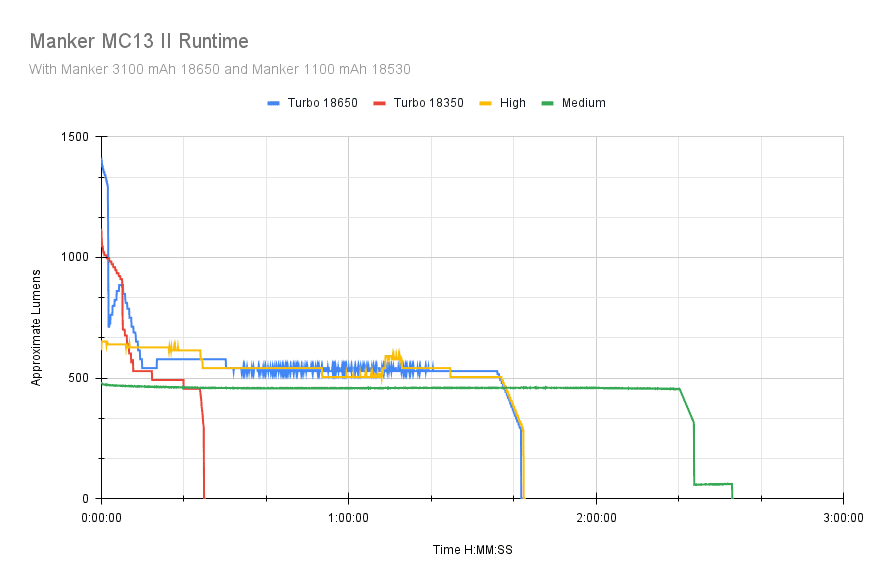
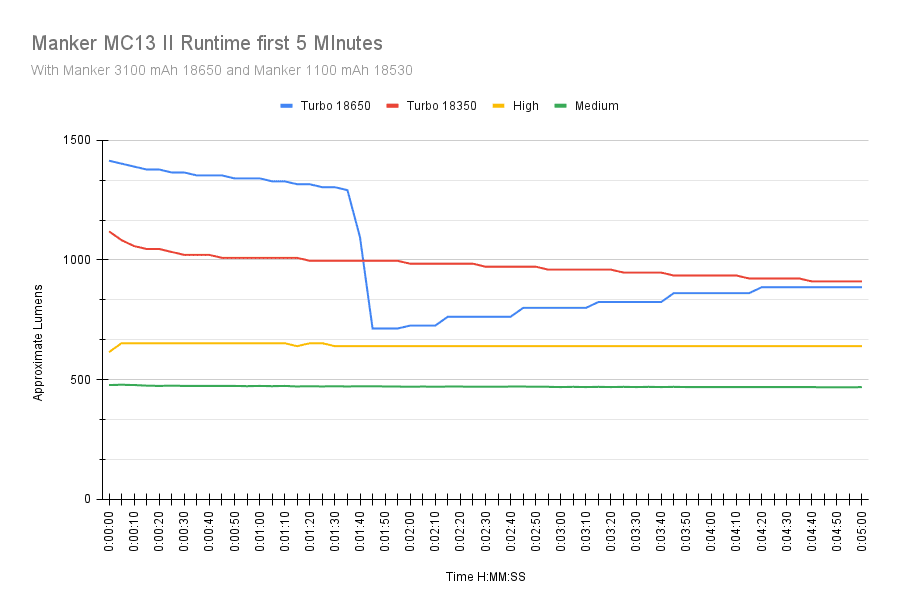
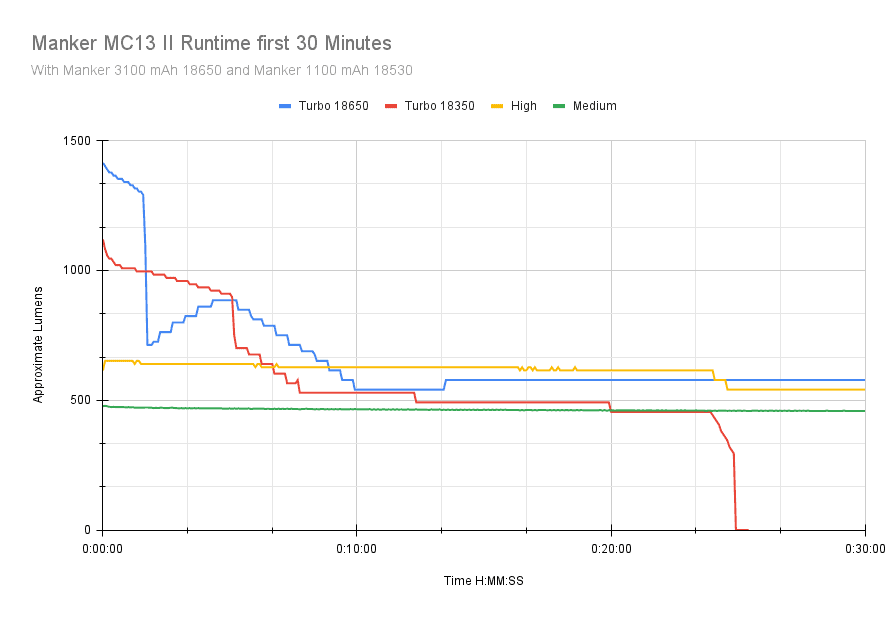
| Mode | Specified | Measured runtime ANSI | Time till shut off |
|---|---|---|---|
| Medium | 3h 20m | 2h 32m | 2h 32m |
| High | 1h 50m | 1h 42m | 1h 42m |
| Turbo (18350) | 30m | 24m | 24m |
| Turbo (18650) | 1h 35m | 1h 41m | 1h 41m |
The runtimes mostly follow Manker’s spec, except the Medium runtime. Still, pretty good performance. The light didn’t heat up much, and was hand-holdable the entire High and Turbo tests, so there’s good thermal management. It seems the thermal limit is set to 55 C, since it never crept above that, and didn’t heat up as fas as I thought, only hitting 44C by 30 seconds, and 53 C by 60 seconds. The output on Turbo started dropping gradually by the 1 minute 10 second mark, and rose back to about 850 Lumens by 3 minutes then dropped down to about 550 Lumens. The output for each mode is fully regulated, which is nice and a great upgrade from FET/direct drivers. Overall, I’m pretty impressed with the MC13 II’s output. You get better than 1000 Lumens for almost 2 minutes. The luxmeter sensor picks up some noise around the 1 hour mark, reflected in the spikes in the output.
About ANSI FL1 standards: The runtime is measured until the light drops to 10% of its initial output (30 seconds after turning on). This does not mean that the flashlight is not usable anymore. The last column shows how long the light actually works till it shuts off. If there is a + symbol, it means that the test was stopped at that particular point, but the light was actually still running. This happens on certain occasions, with certain drivers, firmware, or batteries.
Peak beam intensity and beam distance measurements
Beam distances are measured using a Uni-T UT383S luxmeter measured indoors at 5 meters using the included fully charged 1100 mAh 18350. Measurements taken at 30 seconds.
| Mode | Specs | Candela measured | Meters | Yards |
|---|---|---|---|---|
| Moonlight | ? | 100 | 20 | 22 |
| Ultra low 1 | ? | 1250 | 71 | 77 |
| Ultra low 2 | ? | 3500 | 118 | 129 |
| Low | 4900 | 8825 | 188 | 205 |
| Medium | 25,600 | 31,650 | 356 | 389 |
| High | 40,000 | 46,100 | 429 | 469 |
| Turbo | 90,000 | 103,450 cd | 643 | 703 |
| Turbo 18350 | 76,975 | 76,975 cd | 555 | 607 |
Throw figures (according to Manker) were taken with the 18650 battery, and I’m getting slightly more. These are impressive figures from a light smaller than the Acebeam L17! Manker doesn’t list figures for the smaller battery, so I tested the 18350 and I got 554.8 meters. Still an impressive figure for such a compact light. The SFT-40-W can really hurl the photons out of that TIR.
About peak beam intensity: Peak beam distance according to ANSI FL1 standards: The calculated value of distance in meters at which the flashlight produces a light intensity of 0.25 lux. (0.25 lux is about the brightness of a full moon shining on an object). The columns ‘Meters’ and ‘Yards’ use rounded numbers.
Beamshots
I compared the Manker MC13 II to some other throwy flashlights, some with TIR, some with the SFT-40-W LED. The Acebeam L17 features an Osram W2 LED, but the TIR is similar to the MC13 II. Photos taken with my Samsung Note 8. The 95 meter shots with the camera set to 0.3s ISO 200 and 5000K WB.
Beamshots of the following flashlights compared:
- Acebeam L17 (TIR)
- Astrolux EA01 (TIR)
- Cyansky K3 V2 (reflector)
- Manker MC13 II
- Wurkkos TS32 in spot mode (reflector)
- Fenix PD35 V3 (reflector)
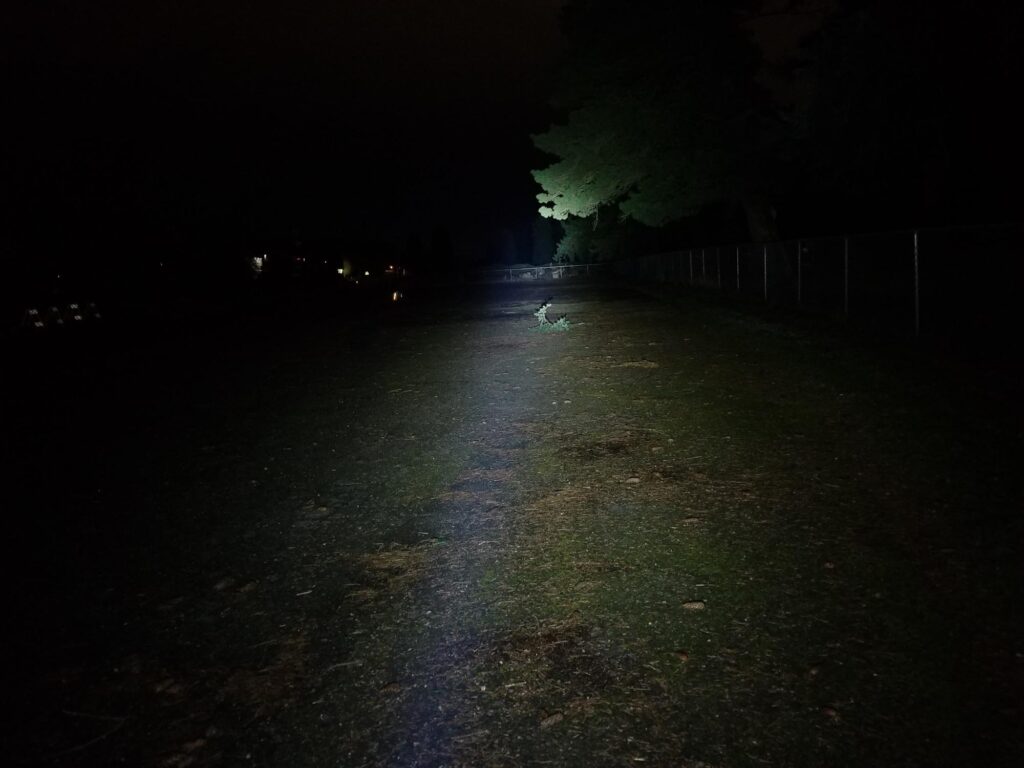
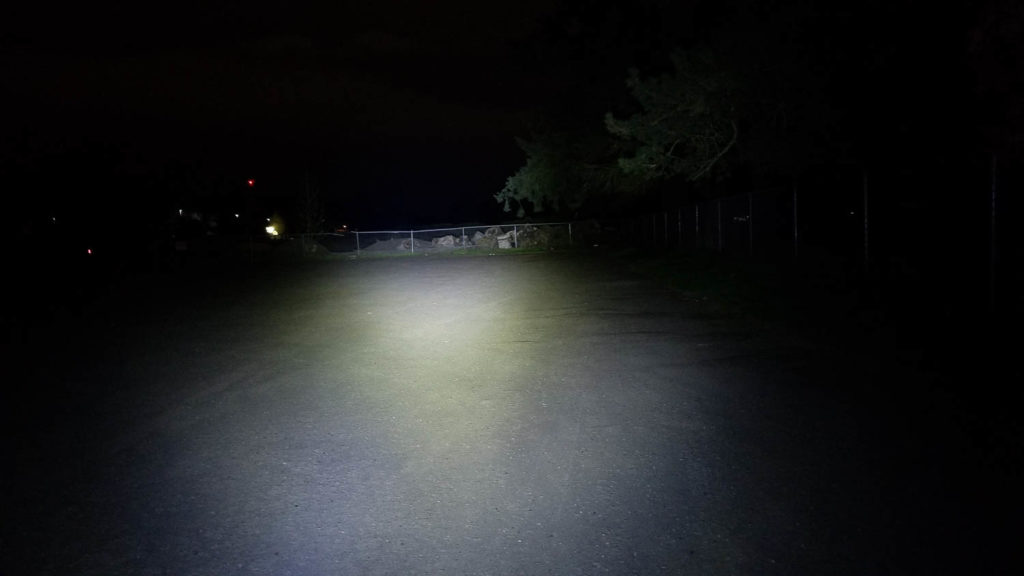
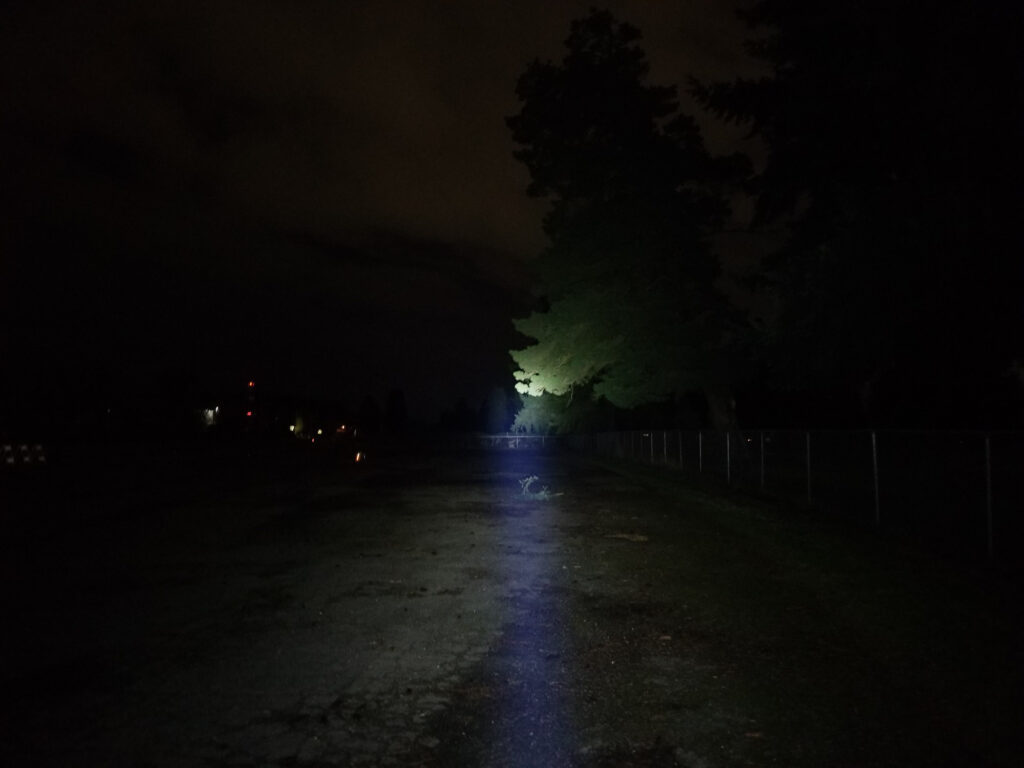
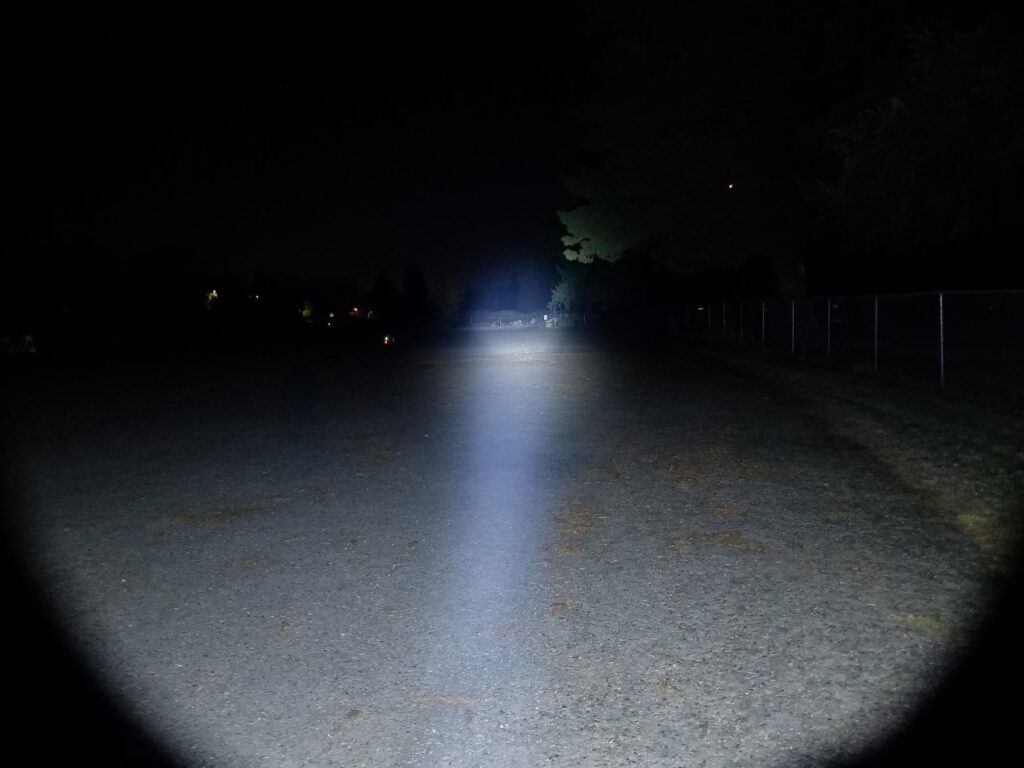

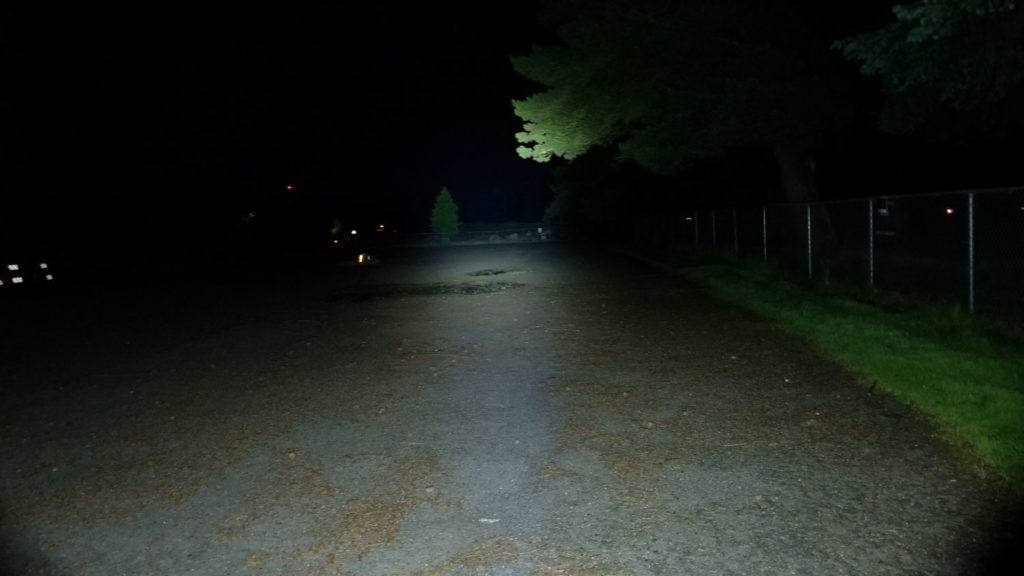
Disclaimer: This flashlight was sent to me for review at no cost by Flashlight Brand. I have not been paid to review, nor have I been holding back on problems or defects.
Final Verdict
Pros
- Great build quality
- Simple UI
- Onboard USB type C charging
- Fully regulated output
- Can use 18650 and 18350 with one tube
- Great throw in a small light
- Throws farther than specs
Cons
- Didn’t meet factory output specs
- Not much spill
- No pocket clip
Explanation on star ratings:
1: Avoid: a match would be a better choice – 2: Poor: significant defect or issues; almost unusable – 3: Average: some defects or issues; but still usable 4: Good: recommended (minor issues) – 5: Great: highly recommended

4.5 stars: ★★★★⋆
While our star rating provides a reliable indicator, we encourage you to read the full review to make an informed decision based on your own needs and preferences.
My first Manker, and I’m tickled pink with this MC13 II. The original MC13 sort of paved the way for the latest generation of TIR based pocket lights like the Acebeam L17, Sofirn IF22, Thrunite Catapult Mini, and Wurkkos TS11. It also proved that a relatively small TIR can throw as good as a much larger reflector, something I’ve verified with the Acebeam TIR-based tactical throwers.
The MC13 II an extremely pocketable mini thrower, and the switch to the more powerful SFT-40-W is a welcome upgrade, without much of a deficit compared to the Osram-equipped MC13. I really dig the solid build quality, nice finish, and the fully regulated output from the buck driver is a nice perk.
I give Manker major kudos for the battery tube design and implementing pretty seamless 18350/18650 compatibility without swapping tubes. No other manufacturer has a feature like this that I know of. While Manker sticks a pretty stout magnet in the tailcap for some magnetic-clinging action, there’s no pocket clip, which would be nice to have. There’s not much I don’t like about this light, but my tests didn’t get close to the advertised output on Turbo and High mode, and way down on the 18350. It gives up side illumination due to the TIR, but almost 700 meters of throw out of a 40 mm head is fantastic. For those who like to live on the edge, you can get this light with the baddest thrower LED out there, the SBT90.2. While Manker doesn’t have the street cred of Acebeam, Olight, Fenix, or Thrunite, they sure make a nice light, and the combination of innovative features, buck driver, great throw, and compact size is a nice argument to check out the MC13 II over other small TIR based throwers. 4.5 stars for the MC13 II.
Buy your Manker MC13 II with a discount
Note: August 2023: WARNING: don’t buy from flashlightbrand.com!!!
We received questions whether flashlightbrand.com is still legit, because they either didn’t respond, or didn’t receive their orders. We tried to reach out multiple times, through multiple platforms, and they never replied to any of our messages. Warned: DO NOT BUY FROM FLASHLIGHTBRAND.com, because you will not receive your flashlight
1lumen selects and reviews products personally. We may earn affiliate commissions through our links, which help support our testing.